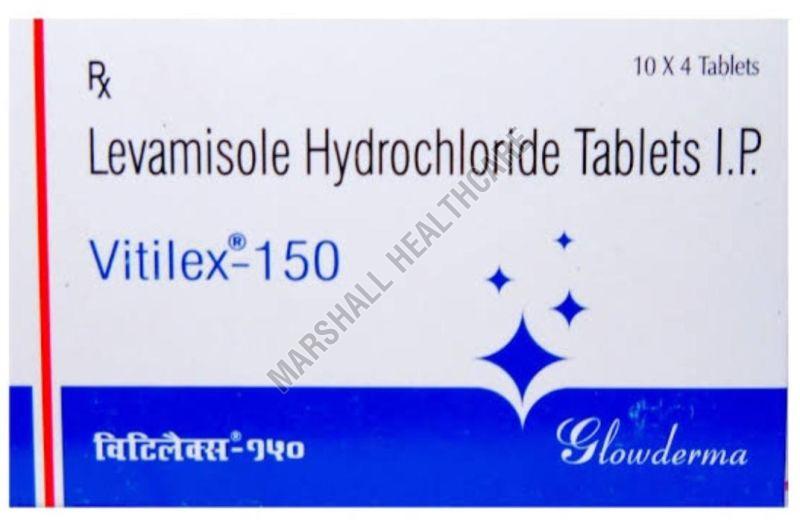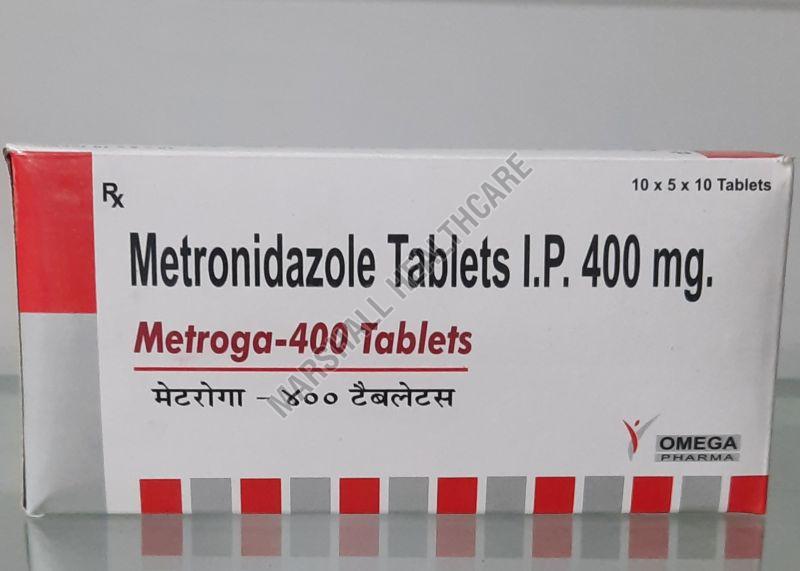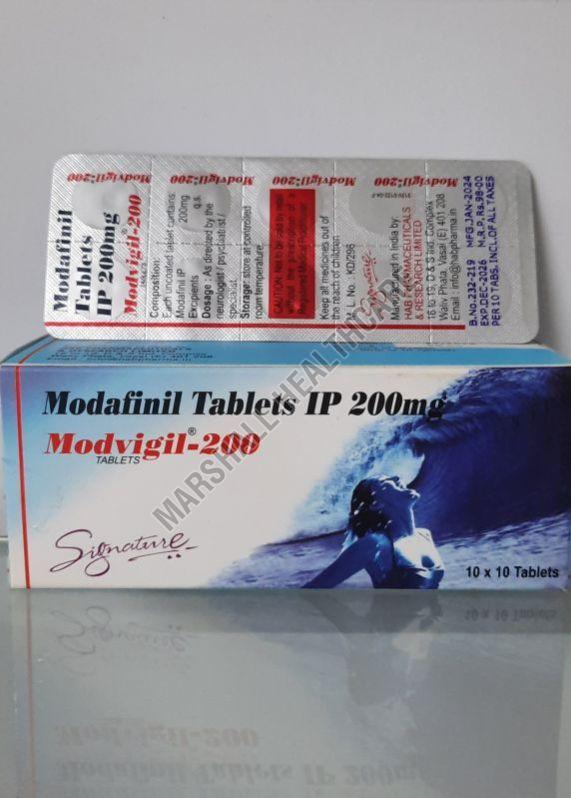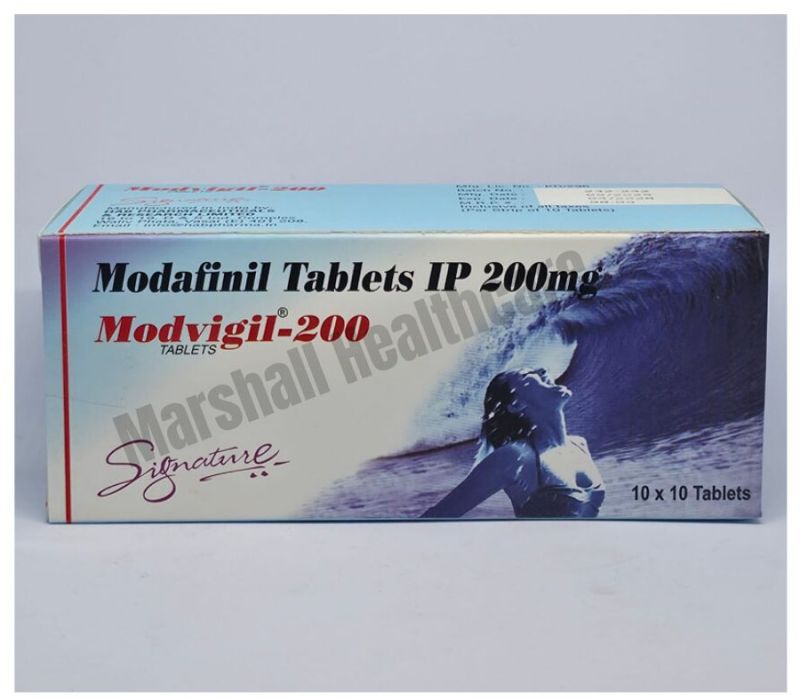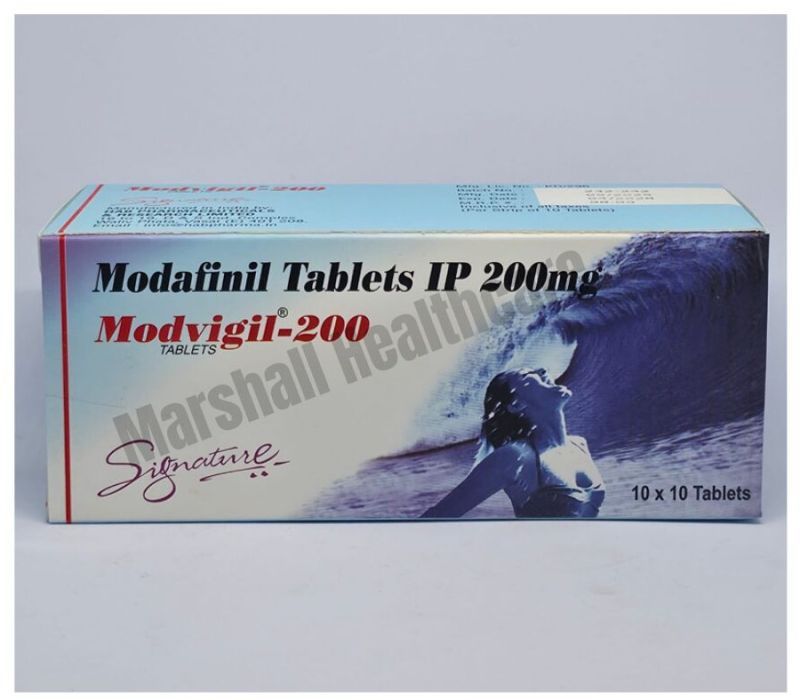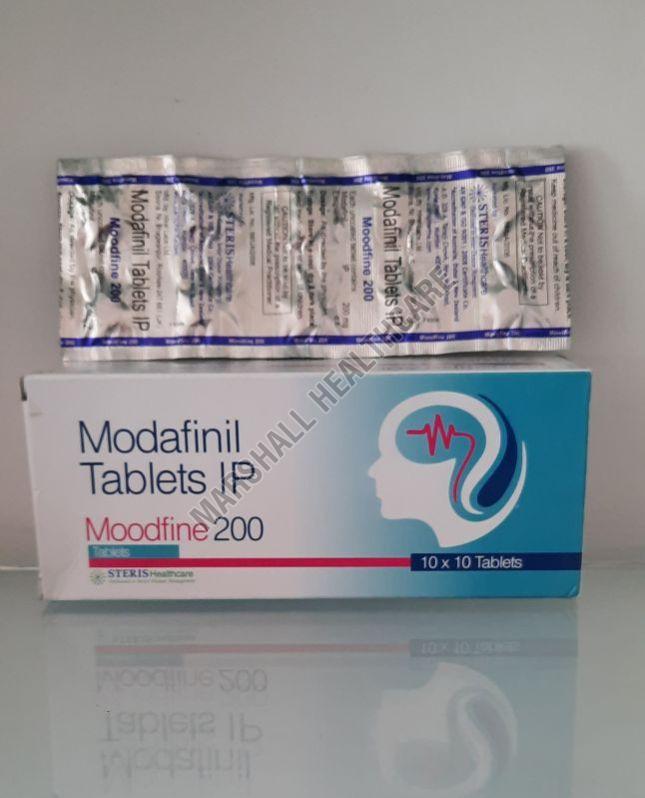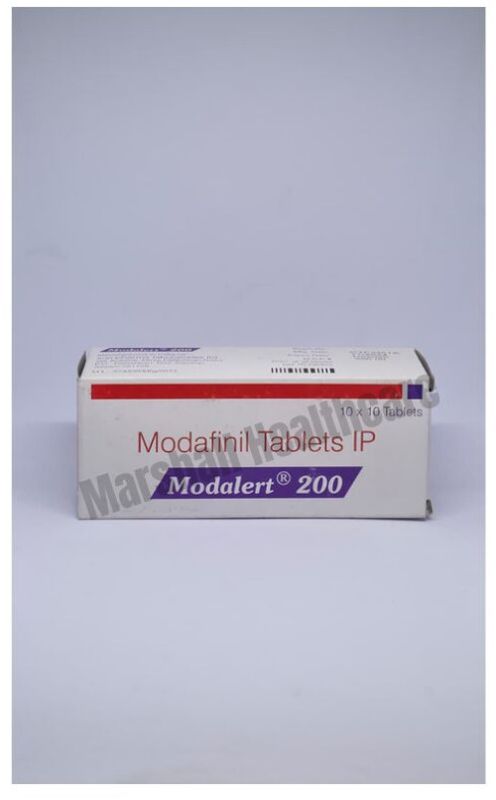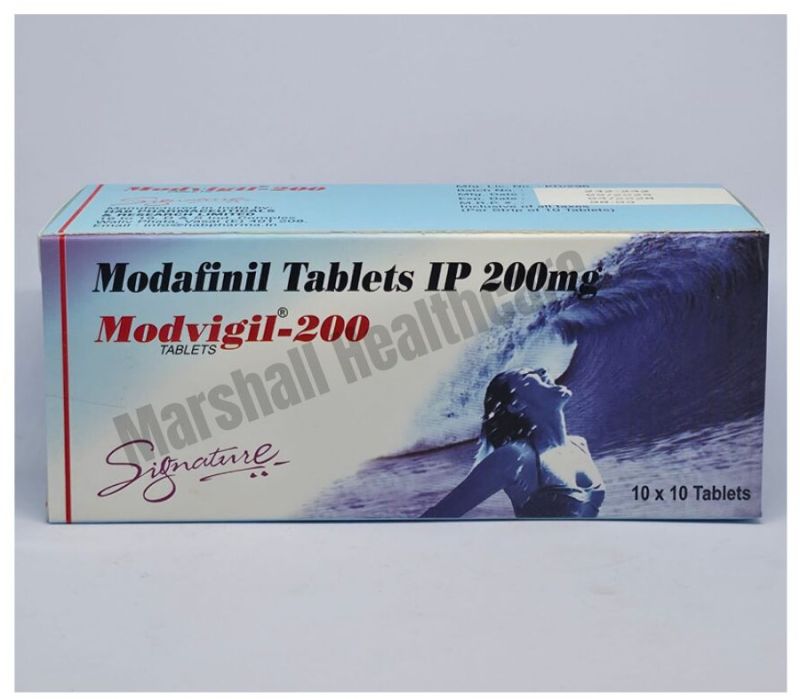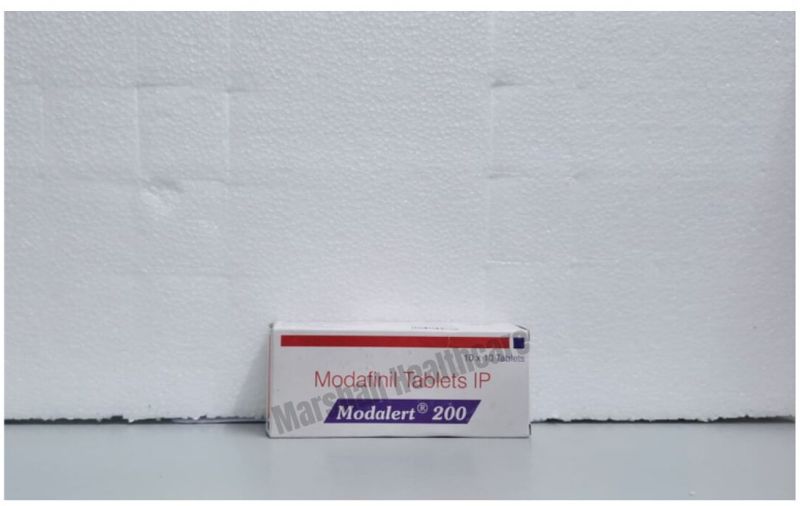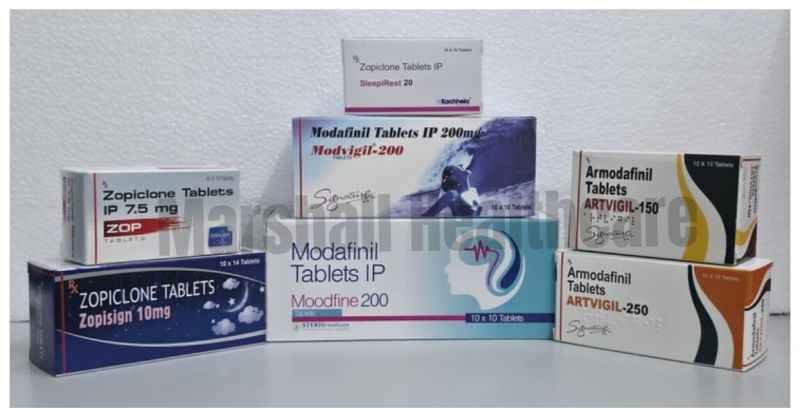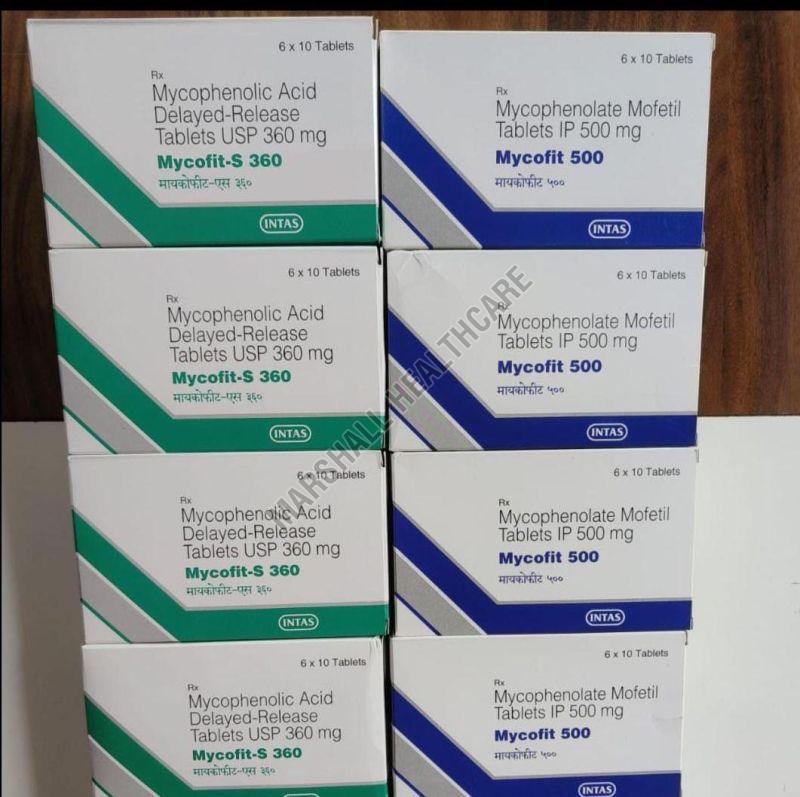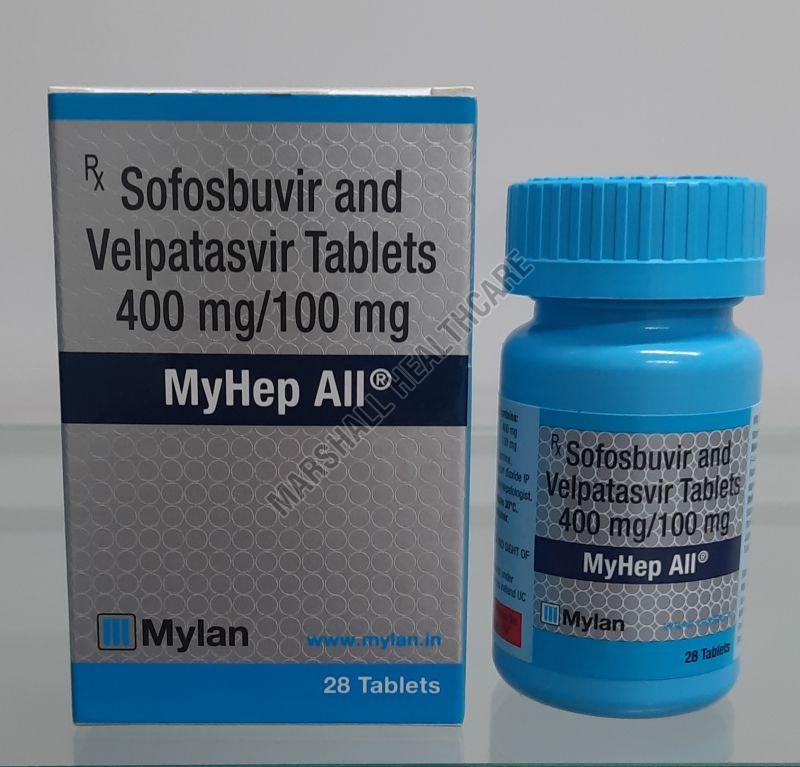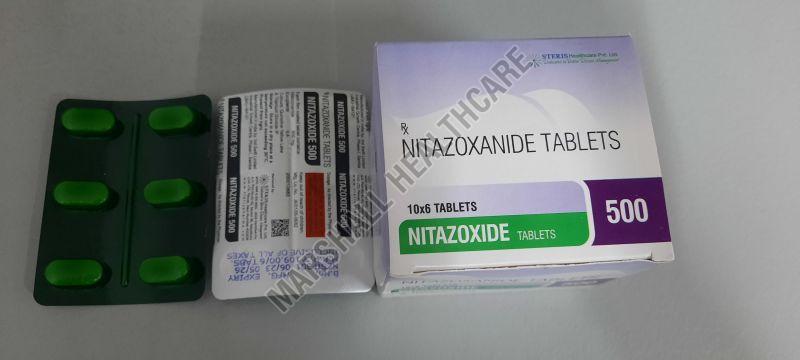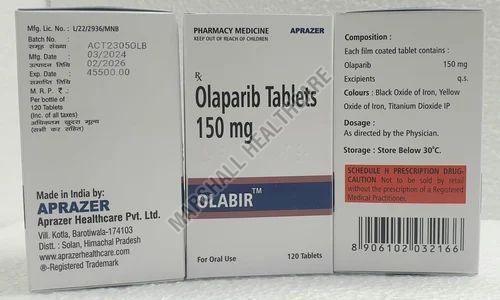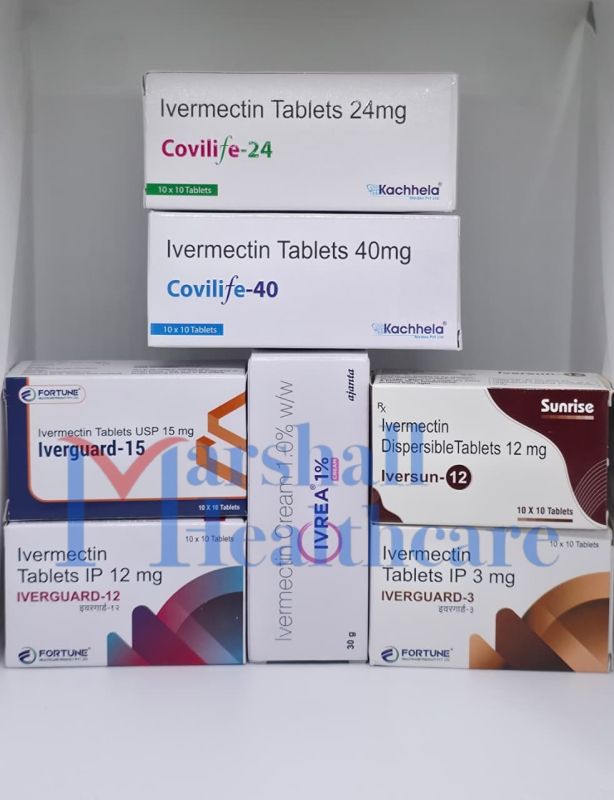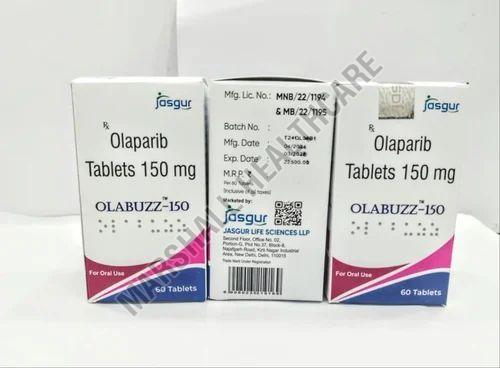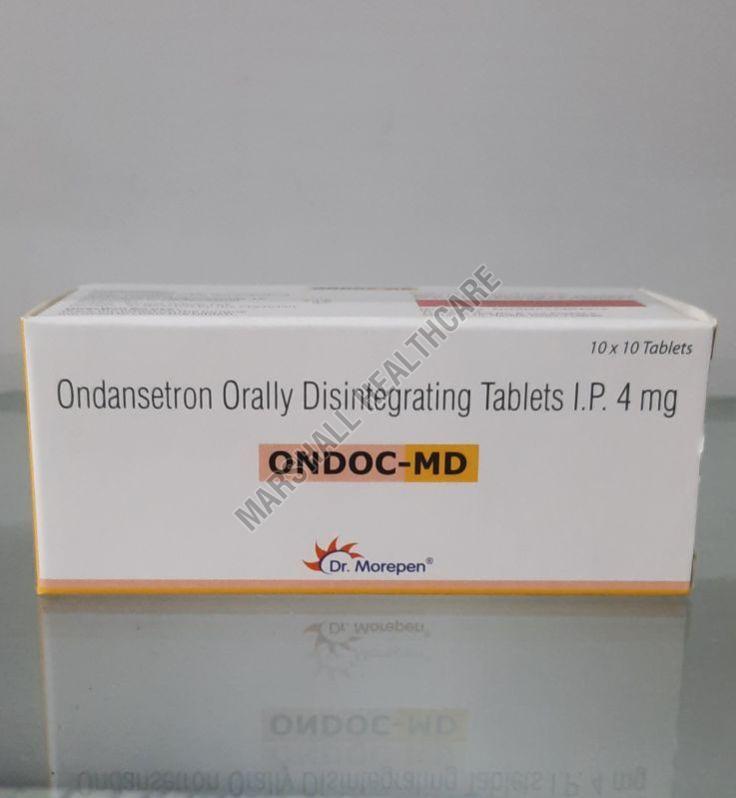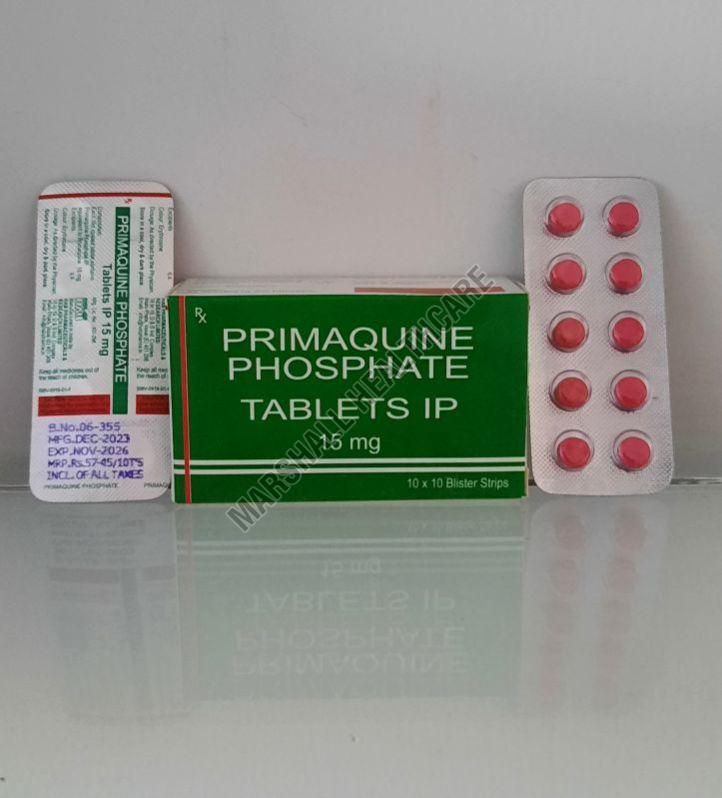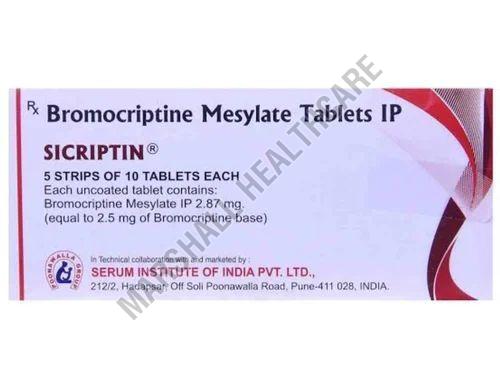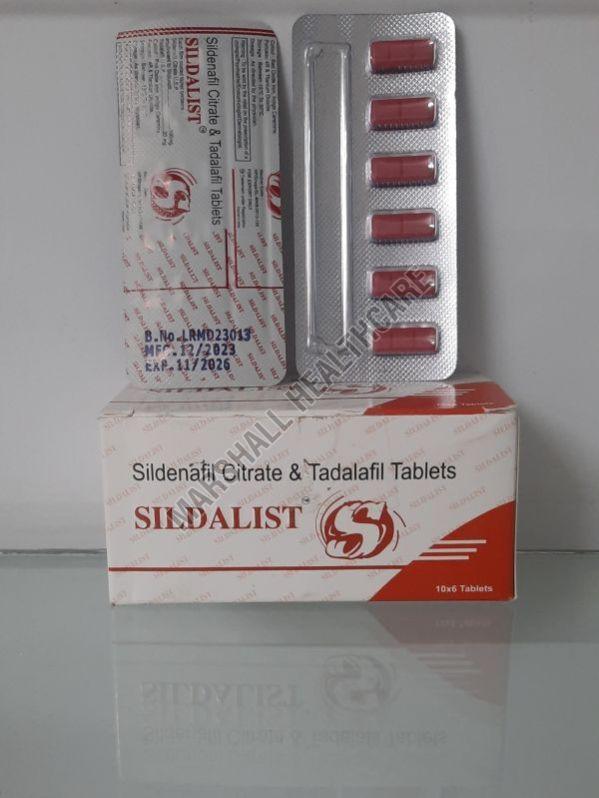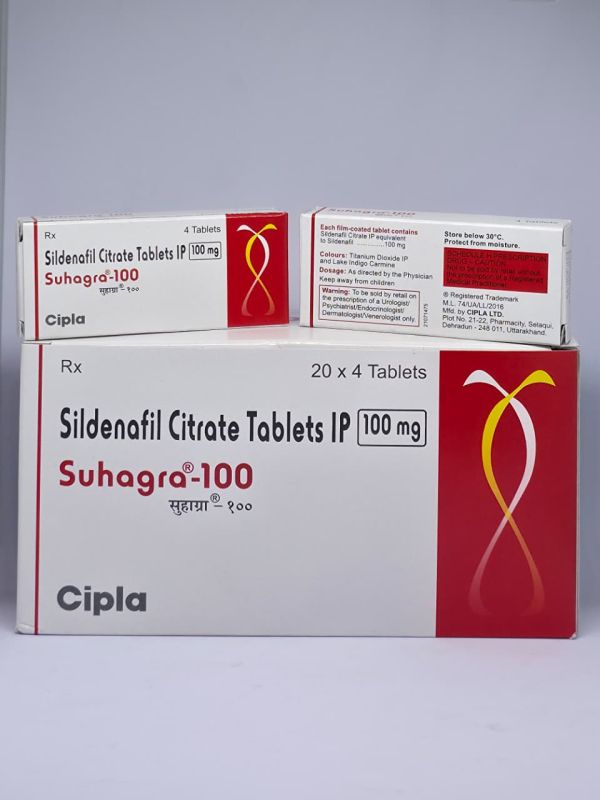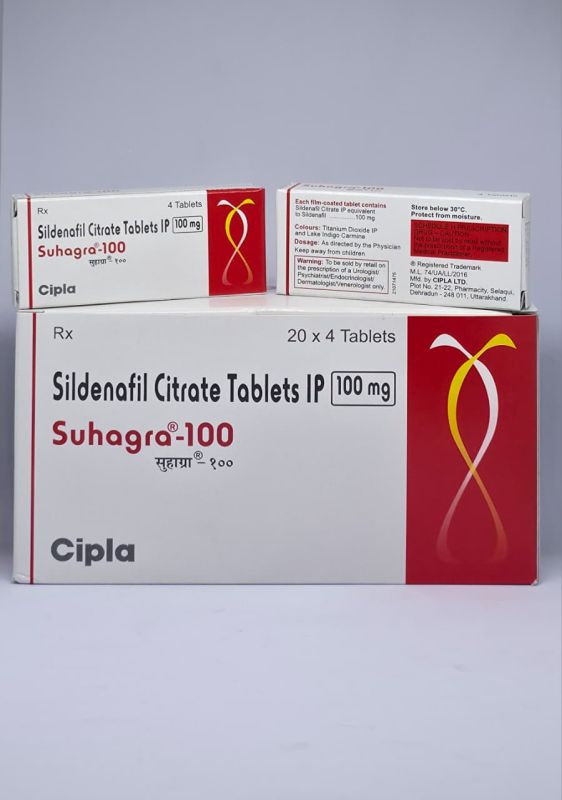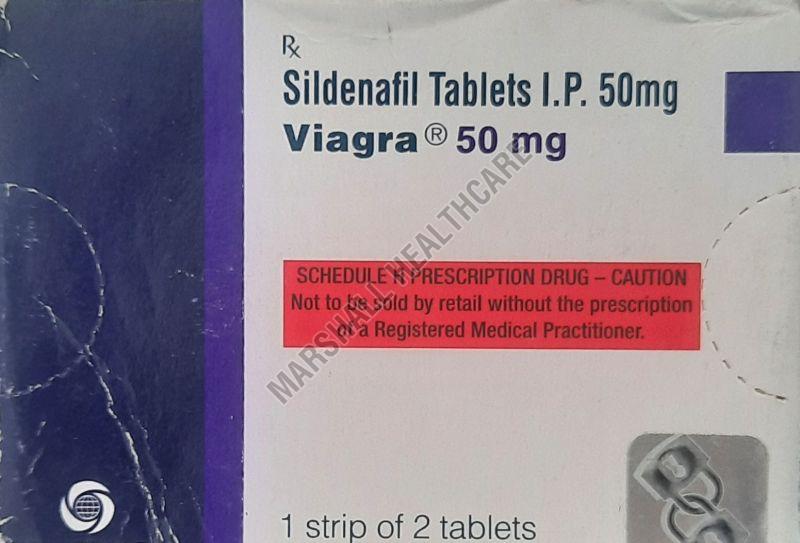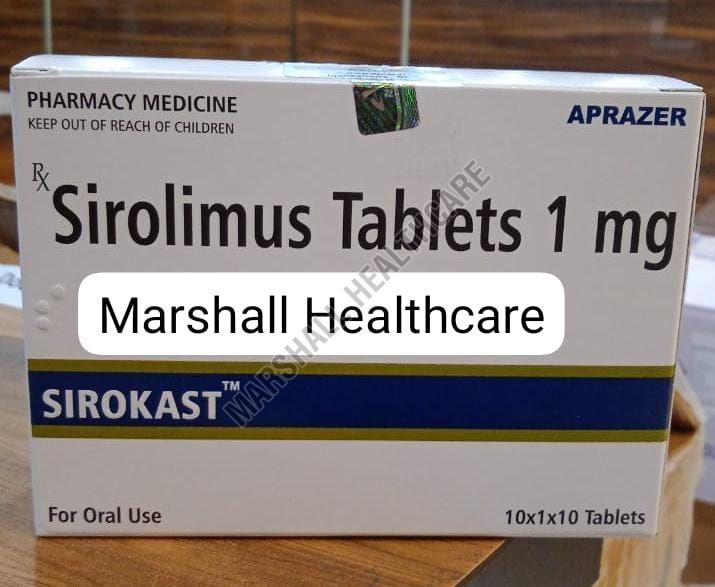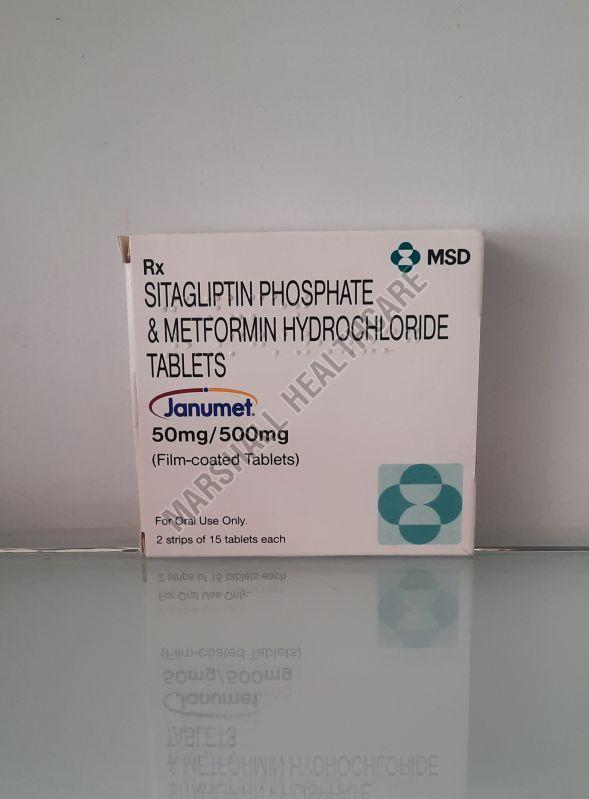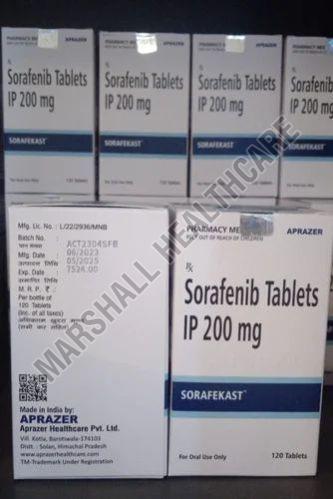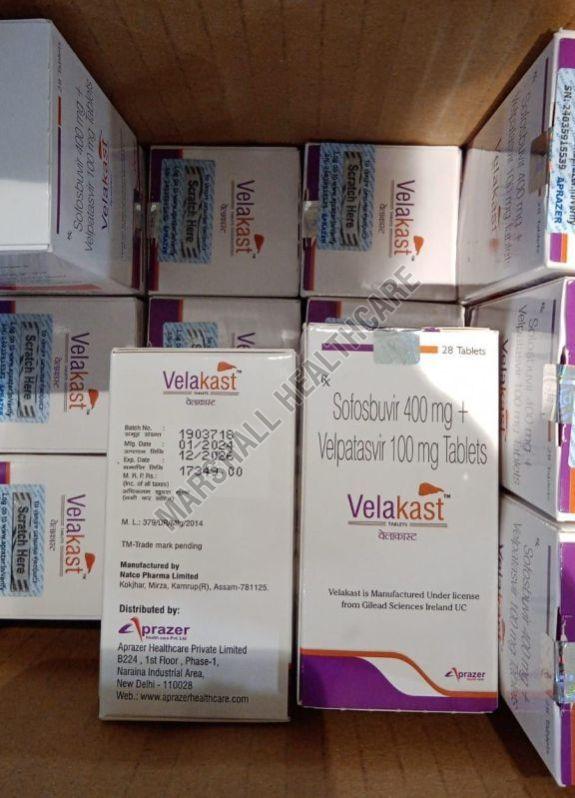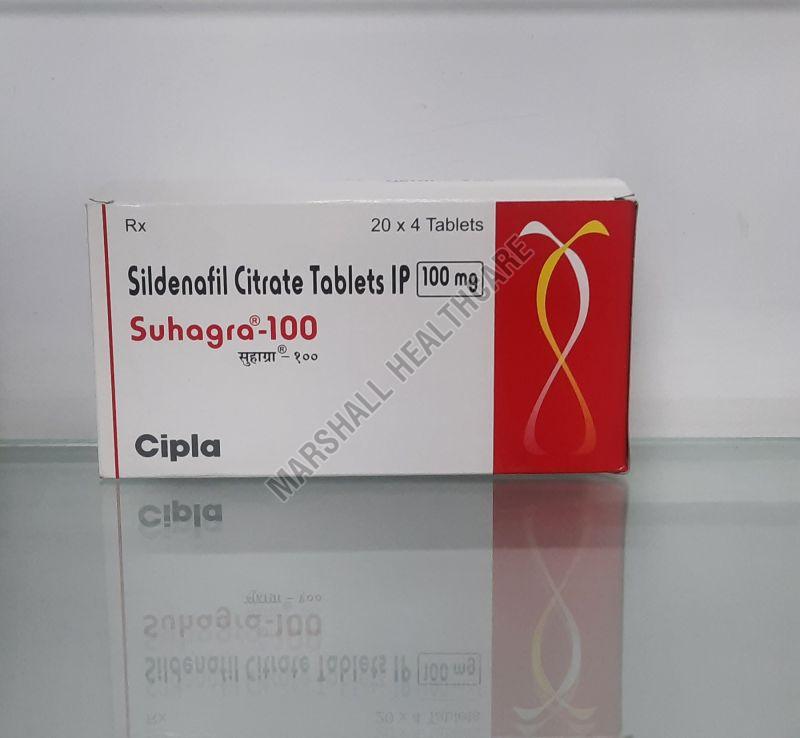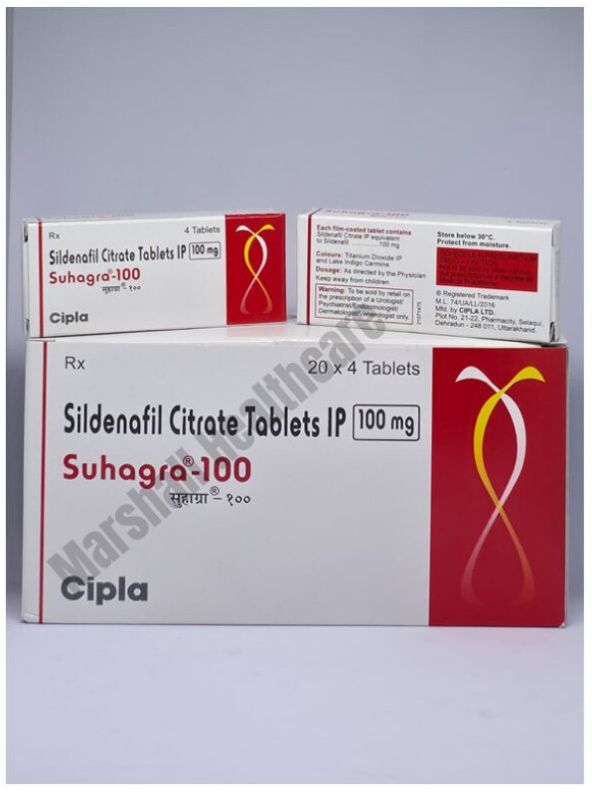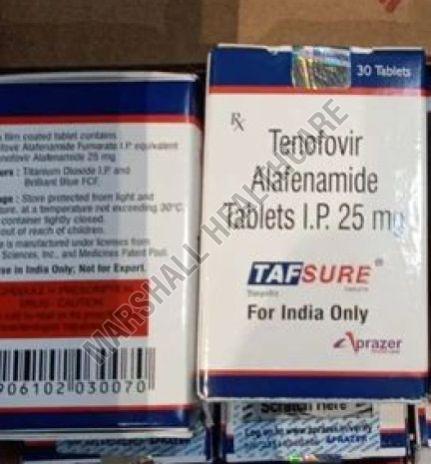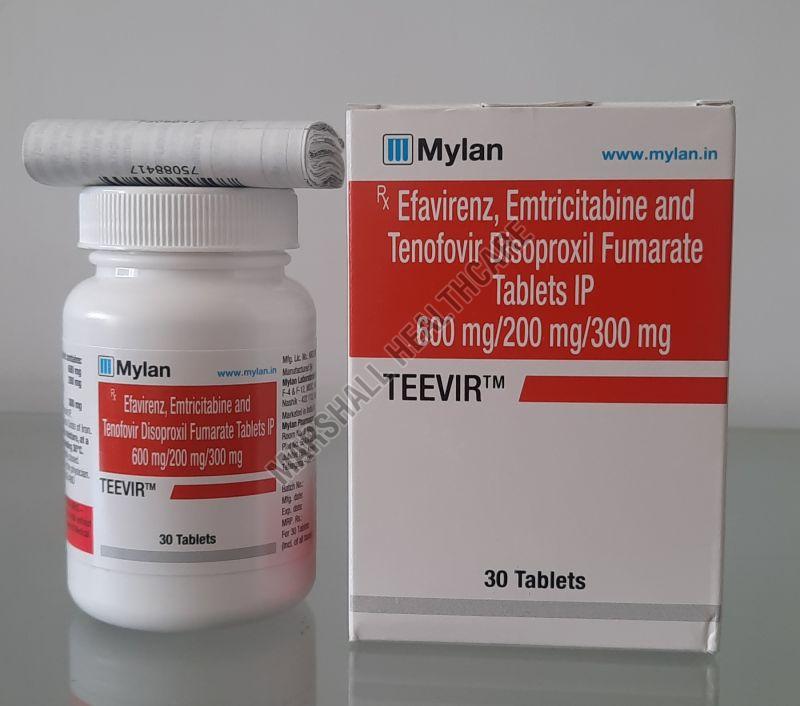| Business Type | Exporter, Supplier, Retailer, Trader, Distributor |
| Application | Clinical, Hospital |
| Packaging Type | Box,10x4Tablet |
| Form | Tablets |
| Grade Standard | pharma grade |
| Packaging Size | 10*1*4 Tablets |
| Number Of Flower | Levamisole Hydrochloride |
| Treatment | Commonly Used for the Treatment of Parasitic,Viral,and Bacterial Infections. |
| Generic Name | Vitilex-150 |
| Manufactured By | Glowderma |
| Country of Origin | India |
| Product Code | levamisole |
| Port | INMD5 |
| Payment Terms | L/C, D/A, D/P, T/T, Western Union, Other |
| Delivery Time | 7 days |
| Packaging Details | 40 tablets in a box. |
Vitilex 150mg Tablet should be used in the dose and duration as advised by your doctor. It should be taken with food, preferably at a fixed time. Avoid skipping any doses and finish the full course of treatment even if you feel better. Do not take a double dose to make up for a missed dose. Simply take the next dose as planned.
Some people may experience vomiting, headache, dizziness, nausea, and stomach pain as the side effects of this medicine. Please consult your doctor if these side effects do not resolve or persist for a longer duration. You may be monitored with blood tests and liver function tests throughout your treatment.
- \\n
- Worm infections \\n
- Skin disorders \\n
- Schistosoma infections \\n
- Liver abscesses \\n
- Intestinal amoebiasis \\n
- Hepatic amoebiasis \\n
| Business Type | Exporter, Supplier, Trader, Distributor |
| Country of Origin | India |
| Packaging Size | 1*20 |
| Usage | Pharmaceuticals |
| Form | Tablets |
| Brand Name | Metrogyl |
| Color | Sunset Yellow |
| Certification | WHO GMP |
| Grade Standard | Medicine Grade |
| Medicine Type | Allopathic |
| Dosage | As Directed By the Physician |
| Strength | 400mg |
| Generic Name | Metroga-400 Tablets |
| Manufactured By | Omega Pharma |
| Product Code | Metronidazole |
| Port | INAMD5 |
| Payment Terms | L/C, D/A, D/P, T/T, Western Union, Other |
| Delivery Time | 7 DAYS |
| Packaging Details | 1*20 tablets in a box |
Metronidazole is a widely used and effective antibiotic and antiprotozoal medication that belongs to the nitroimidazole class of drugs. It is available in various forms, including oral tablets, and is sold under brand names such as Flagyl.
Mechanism of Action
Metronidazole works by entering the cells of susceptible microorganisms (bacteria and parasites) and disrupting their DNA. In anaerobic (oxygen-lacking) environments, the drug is activated, which allows it to damage the organism's DNA, leading to a loss of its helical structure and strand breakage. This process effectively kills the bacteria or parasite and prevents the infection from spreading.
Uses
Metronidazole tablets are prescribed to treat a wide range of infections caused by anaerobic bacteria and certain protozoa. These infections can occur in various parts of the body, including:
-
Gastrointestinal infections: Such as those caused by Helicobacter pylori (a common cause of stomach ulcers), amebiasis, and giardiasis.
-
Reproductive and Genital infections: Including trichomoniasis and bacterial vaginosis.
-
Skin and soft tissue infections: Including infected leg ulcers and pressure sores.
-
Dental infections: Such as gum disease and dental abscesses.
-
Other infections: Including those of the blood, bone, joints, lungs, and central nervous system.
-
Surgical prophylaxis: It is also used to prevent infections after certain surgical procedures, particularly in the abdomen.
Dosage and Administration
The dosage and duration of treatment with metronidazole tablets vary depending on the specific infection being treated. It is crucial to follow your doctor's instructions precisely and to complete the full course of treatment, even if you start to feel better. Stopping the medication early can lead to the infection returning and may contribute to antibiotic resistance. The tablets are typically taken orally with water, and in some cases, with food to help minimize stomach upset.
Side Effects and Warnings
Common side effects of metronidazole are often related to the gastrointestinal system and may include:
-
Nausea and vomiting
-
Diarrhea or constipation
-
A distinctive, unpleasant metallic taste in the mouth
-
Headache
| Business Type | Exporter, Supplier, Trader, Distributor |
| Generic Name | Modvigil-200 |
| Storage | Cool And Dry Place |
| Dosage | As Per Directed By Doctor |
| Composition | Modafinil Tablet IP 200mg |
| Strength | 200mg |
| Medicine Type | Allopathic |
| Grade Standard | Medicine Grade |
| Form | Tablet |
| Color | White |
| Appearance | White to off white powder |
| Type | Allopathic |
| Brand Name | Modvigil |
| Material | Medical Grade |
| Country of Origin | India |
| Product Code | Modafinil |
| Port | INAMD5 |
| Payment Terms | L/C, D/A, D/P, T/T, Western Union, Other |
| Delivery Time | 7 DAYS |
| Packaging Details | 10*10 tablets in a box |
Modafinil is an oral medication, often sold under the brand name Provigil, that is classified as a wakefulness-promoting agent. It is used to help people who experience excessive sleepiness stay awake and alert during the day. Modafinil is a controlled substance due to its potential for misuse and dependence.
Uses
Modafinil is FDA-approved for the treatment of excessive daytime sleepiness associated with:
-
Narcolepsy: A chronic neurological disorder that affects the brain's ability to control sleep-wake cycles.
-
Obstructive Sleep Apnea (OSA): It is used as an adjunctive treatment to help patients with OSA who still experience sleepiness despite using a primary treatment like a continuous positive airway pressure (CPAP) machine.
-
Shift Work Sleep Disorder (SWSD): This condition affects people who work night, early morning, or rotating shifts and experience difficulty staying awake during their work hours and sleeping during their rest hours.
It is important to note that modafinil does not cure these conditions but helps manage the symptoms of daytime sleepiness. It is not approved for use as a replacement for adequate sleep.
Mechanism of Action
The exact way modafinil works is not fully understood, but it is believed to act as a weak inhibitor of the reuptake of dopamine, a neurotransmitter in the brain that plays a key role in wakefulness and motivation. By increasing the amount of dopamine in the space between nerve cells, modafinil helps to promote a state of wakefulness. Unlike traditional amphetamine-based stimulants, it has a different pharmacological profile and is thought to have a lower potential for abuse, although it can still produce psychoactive and euphoric effects.
Administration
Modafinil is available in oral tablet form, typically in 100 mg and 200 mg strengths. The dosage and timing of administration depend on the condition being treated:
-
For narcolepsy and OSA, it is usually taken once a day in the morning.
-
For SWSD, it is taken about one hour before the start of the work shift.
It can be taken with or without food.
Side Effects
Modafinil is generally well-tolerated, but like all medications, it can cause side effects. Common side effects include:
-
Headache
-
Nausea and upset stomach
-
Nervousness or anxiety
-
Insomnia
-
Dizziness
-
Back pain
More serious, though rare, side effects can occur. You should seek immediate medical attention if you experience:
-
Serious Skin Reactions: These can include Stevens-Johnson syndrome, toxic epidermal necrolysis, or other severe rashes that may be accompanied by a fever, blistering, or peeling skin.
-
Psychiatric Symptoms: New or worsening depression, anxiety, agitation, hallucinations, mania, or thoughts of suicide.
-
Cardiovascular Effects: Chest pain, palpitations, or a rapid heart rate.
-
Allergic Reactions: Swelling of the face, lips, tongue, or throat.
Important Warnings
-
Abuse Potential: Modafinil is a controlled substance. Patients should be assessed for a history of drug abuse, and use should be monitored, as it has the potential for dependence.
-
Cardiovascular Conditions: Use with caution in patients with a history of heart disease, uncontrolled hypertension, or a recent heart attack.
-
Psychiatric Conditions: It should be used with caution in patients with a history of psychosis, depression, or mania.
-
Drug Interactions: Modafinil can interact with other medications, including hormonal birth control, causing it to be less effective. It is crucial to inform your doctor about all medications, vitamins, and supplements you are taking.
| Business Type | Manufacturer, Exporter, Supplier, Trader, Distributor |
| Manufacturer By | Steris Healthcare |
| Storage | Cool And Dry Place |
| Dosage | As Per Directed By Doctor |
| Composition | Modafinil Tablets |
| Type Of Medicines | Allopathic |
| Grade Standard | Medicine Grade |
| Form | Tablet |
| Brand Name | Moodfine |
| Packaging Type | 10*10 tablets in a box |
| Dosage Form | Tablet |
| Application | used to treat excessive sleepiness caused by certain medical conditions |
| Purity | 99% |
| Feature | Mood Alert |
| Is It FSSAI Certified | WHO GMP |
| Packaging Size | 10*10 tablets in a box |
| Medicine Type | Allopathic |
| Strength | 200mg |
| Treatment | used to treat excessive sleepiness caused by certain medical conditions |
| Country of Origin | Made In India,India |
| Indications | used to treat excessive sleepiness caused by certain medical conditions |
| Dose | As directed by physician |
| Generic Name | Moodfine |
| Side Effects | Headache, Nausea, Dizziness, Anxiety |
| Precautions | The medication can increase heart rate and blood pressure. |
| Prescription/Non Prescription | Prescription |
| Manufactured By | Hiral Labs |
| Manufacturer | Hiral Labs |
| Strengh | 200 MG |
| Main Nutrients | Modafinil |
| Used in the treatment | used to treat excessive sleepiness caused by certain sleep disorders |
| Expiration Date | 3 Years |
| Type | Allopathic |
| Material | Medical Grade |
| Product Code | Moodfine |
| Port | INAMD5 |
| Payment Terms | L/C, D/A, D/P, T/T, Western Union, Other |
| Delivery Time | 7 DAYS |
| Packaging Details | 10*10 tablets in a box |
Moodfine 200mg Tablets are a medication that contain the active ingredient modafinil. It is a wakefulness-promoting agent used to treat excessive sleepiness caused by certain medical conditions.
Key Information:
-
Active Ingredient: Modafinil (200 mg).
-
Drug Class: Moodfine belongs to a class of drugs called "eugeroics" or wakefulness-promoting agents. Unlike traditional stimulants, it is thought to work by affecting levels of certain chemical messengers in the brain, such as dopamine and norepinephrine, to promote wakefulness and alertness.
-
Uses: Moodfine 200mg is primarily prescribed for the treatment of:
-
Narcolepsy: A chronic sleep disorder that causes uncontrollable episodes of daytime sleepiness.
-
Obstructive Sleep Apnea (OSA): It is used as an aid to help reduce daytime sleepiness in people with OSA who are already receiving treatment for their condition (e.g., using a CPAP machine).
-
Shift Work Sleep Disorder (SWSD): A condition that affects people who work night shifts or rotating shifts, causing them to have trouble sleeping and feeling excessively sleepy during work.
-
-
Off-Label Use: Due to its effects on alertness and cognitive function, modafinil is sometimes used "off-label" to improve focus, concentration, and productivity in individuals who do not have a diagnosed sleep disorder. This use is not approved by regulatory bodies and should be undertaken with caution and under a doctor's supervision.
Dosage and Administration:
-
The dosage is determined by a doctor based on the specific condition being treated.
-
For narcolepsy and OSA, the typical dose is 200 mg taken once daily in the morning.
-
For SWSD, it is generally taken approximately one hour before the start of the work shift.
-
The tablets can be taken with or without food.
-
It is crucial to follow your doctor's instructions and not to take more than the prescribed amount.
Common Side Effects:
-
Headache
-
Nausea
-
Dizziness
-
Insomnia (difficulty sleeping), especially if taken too late in the day
-
Anxiety or nervousness
-
Dry mouth
Serious Side Effects and Warnings:
-
Severe Skin Reactions: In rare cases, modafinil can cause serious and life-threatening skin rashes, including Stevens-Johnson syndrome. If a rash or any signs of an allergic reaction (hives, swelling of the face, difficulty breathing) occur, stop the medication and seek immediate medical help.
-
Cardiovascular Issues: The medication can increase heart rate and blood pressure. It should be used with caution in individuals with a history of heart problems, high blood pressure, or a mitral valve disorder.
-
Mental Health: Moodfine can cause or worsen psychiatric symptoms, including depression, anxiety, agitation, mania, or psychosis. It is important to inform your doctor if you have a history of mental health disorders.
-
Drug Interactions: Modafinil can interact with other medications, including hormonal birth control, making it less effective. It is vital to inform your doctor about all medications, supplements, and herbal products you are taking.
-
Dependence: Modafinil has a potential for misuse and psychological dependence, although it is considered to have a lower abuse potential than traditional stimulants.
| Business Type | Exporter, Supplier, Trader, Distributor |
| Country of Origin | Made In India,India |
| Usage/Application | To Prevent Organ Transplant Rejection,Clinical, Hospital |
| Medicine Type | Allopathic |
| Brand Name | Mycophenolate Mofetil |
| Treatment | Mycophenolate mofetil is an immunosuppressant medication used to prevent the body from rejecting a t |
| Prescription/Non Prescription | Prescription |
| Composition | Mycophenolate Mofetil 500mg Tablets,Mycophenolate |
| Botanical Name | Mycofact-360 |
| Form | Tablets |
| Strength | 360 mg |
| Manufactured By | INTAS |
| Port | INAMD5 |
| Payment Terms | L/C, D/A, D/P, T/T, Western Union, Other |
| Delivery Time | 7 DAYS |
| Packaging Details | 1*10 tablet in a box |
Mycophenolate mofetil is an immunosuppressant medication used to prevent the body from rejecting a transplanted organ. It is available in various forms, including tablets, capsules, oral suspension, and intravenous injection, and is often sold under the brand name CellCept.
Uses
Mycophenolate mofetil is primarily used in patients who have received an organ transplant, such as a:
-
Kidney transplant
-
Heart transplant
-
Liver transplant
It is always used in combination with other immunosuppressive drugs, such as cyclosporine and corticosteroids. By lowering the body's natural immune response, it helps to ensure the transplanted organ is not recognized as a foreign object and attacked by the immune system.
Mycophenolate mofetil is also used "off-label" to treat a number of autoimmune diseases, including:
-
Lupus (especially with kidney involvement)
-
Rheumatoid arthritis
-
Vasculitis
-
Inflammatory bowel disease
-
Psoriatic arthritis
-
Certain skin and eye disorders
Mechanism of Action
Mycophenolate mofetil is a prodrug, meaning it is converted into its active form, mycophenolic acid (MPA), after being absorbed by the body. MPA works by inhibiting an enzyme called inosine monophosphate dehydrogenase (IMPDH). This enzyme is critical for the synthesis of guanosine nucleotides, which are essential for the proliferation of B- and T-lymphocytes. These lymphocytes are the key components of the immune system responsible for recognizing and attacking foreign tissues and organs. By selectively targeting this pathway, mycophenolate mofetil effectively suppresses the immune system's rejection response without causing widespread toxic effects on other types of cells.
Administration
Mycophenolate mofetil tablets are taken orally, usually twice a day. It is important to take the medication exactly as prescribed by your doctor and at the same time each day to maintain a consistent level of the drug in your body. The tablets should be swallowed whole and not crushed, chewed, or broken.
Side Effects
As a potent immunosuppressant, mycophenolate mofetil can cause a range of side effects. Common side effects include:
-
Gastrointestinal issues: Nausea, vomiting, diarrhea, constipation, and stomach pain.
-
Low blood cell counts: This can lead to a decreased number of white blood cells (increasing the risk of infection), red blood cells (anemia), and platelets (increasing the risk of bruising and bleeding). Regular blood tests are necessary to monitor these levels.
-
Increased risk of infection: By suppressing the immune system, the drug makes patients more vulnerable to infections.
-
Headache
-
Tremors
-
Hair loss
More serious, but less common, side effects may include:
-
Increased risk of cancer: Patients on immunosuppressants have a higher risk of developing certain cancers, particularly lymphomas and skin cancer.
-
Progressive multifocal leukoencephalopathy (PML): A rare and serious brain infection that can cause severe disability or death.
-
Bone marrow suppression: In some cases, the drug can significantly reduce blood cell production.
Important Warnings
-
Pregnancy and Birth Defects: Mycophenolate mofetil can cause severe birth defects and miscarriages. Women of childbearing potential must use effective birth control before, during, and for a period of time after treatment.
-
Do not stop taking the medication abruptly: Stopping the medication suddenly can lead to a severe rejection of the transplanted organ.
-
Vaccinations: Patients on mycophenolate mofetil should avoid live vaccines and should discuss any vaccination plans with their doctor.
-
Skin Cancer Risk: Patients should avoid excessive sun exposure and use sunscreen and protective clothing to reduce the risk of skin cancer.
| Business Type | Exporter, Supplier |
| Color | White |
| Form | Tablets |
| Grade Standard | Medicine Grade |
| Strength | 400mg / 100mg |
| Composition | Sofosbuvir And Velpatasivir Tablets |
| Manufacturer By | MyLan |
| Medicine Type | Allopathic |
| Dosage | As per directed by doctor |
| Storage | Cool and dry place |
| Generic Name | MyHep ALL |
| Business Type | Exporter, Supplier, Trader, Distributor |
| Country of Origin | India |
| Packaging Size | 10x6 Tablets |
| Grade Standard | Medicine Grade |
| Usage | Clinical, Hospital |
| Form | Tablets |
| Brand Name | Nitazoxide,Nitazoxanide |
| Generic Name | Nitazoxide |
| Type | Allopathic |
| Material | Medical Grade |
| Product Code | Nitazoxanide |
| Port | INAMD5 |
| Payment Terms | L/C, D/A, D/P, T/T, Western Union, Other |
| Delivery Time | 7 DAYS |
| Packaging Details | 10*6 tablets in a box |
Nitazoxanide Tablets 500mg are an antiparasitic medication used to treat certain types of infections, particularly those causing diarrhea.
How it Works:
Nitazoxanide belongs to a class of drugs called antiprotozoal agents. It works by interfering with the essential energy metabolism of certain parasites, specifically an enzyme called pyruvate:ferredoxin oxidoreductase (PFOR). By inhibiting this enzyme, it disrupts the parasite's ability to produce energy, ultimately leading to its death.
Uses:
Nitazoxanide 500mg tablets are primarily prescribed for the treatment of diarrhea caused by the protozoa Cryptosporidium parvum and Giardia lamblia in patients 12 years of age and older.
While it's primarily an antiparasitic, nitazoxanide has a broad spectrum of activity and has also been studied for other infections, including some viral and bacterial infections.
Dosage and Administration:
-
The usual dose for adults and children 12 years and older is a 500mg tablet taken every 12 hours for 3 days.
-
It is crucial to take the tablets with food, as this can significantly increase the drug's absorption.
-
It is important to complete the full course of treatment as prescribed by your doctor, even if your symptoms improve quickly, to ensure the infection is fully treated.
Potential Side Effects:
Common side effects of nitazoxanide can include:
-
Stomach pain or cramps
-
Nausea
-
Headache
-
Discolored urine
Less common or more serious side effects can occur. Contact your doctor immediately if you experience signs of an allergic reaction, such as a rash, hives, or swelling of the face, lips, or tongue.
Important Safety Information:
-
Pregnancy and Breastfeeding: The safety of nitazoxanide during pregnancy and breastfeeding has not been definitively established. It should be used with caution and only if the potential benefits outweigh the risks.
-
Liver or Kidney Problems: If you have pre-existing liver or kidney disease, your doctor may need to adjust your dosage or monitor you more closely.
-
Immune System Problems: The effectiveness of nitazoxanide has not been shown for the treatment of Cryptosporidium parvum in patients who are HIV-positive or have a weakened immune system.
-
Drug Interactions: Tell your doctor about all other medications you are taking, including over-the-counter drugs, as nitazoxanide can interact with other highly protein-bound medications.
Always consult with a healthcare professional for diagnosis and treatment, and follow their instructions carefully regarding this medication.
| Business Type | Exporter, Supplier, Trader, Distributor |
| Speciality | A Type Of Targeted Chemotherapy Known As A PARP (poly-ADP Ribose Polymerase) Inhibitor |
| Active Ingredient | Olaparib |
| Strength | 150mg |
| Material | Medical Grade |
| Form | Tablets,Tablet |
| Packaging | Bottle |
| Composition | Olaparib 150mg |
| Country of Origin | India |
| Packaging Size | 120 Tablets |
| Generic Name | Olabir |
| Manufactured By | Aprazer Healthcare Pvt. Ltd. |
| Product Code | Olabir |
| Port | INAMD5 |
| Payment Terms | L/C, D/A, D/P, T/T, Western Union, Other |
| Delivery Time | 7 DAYS |
| Packaging Details | 120 tablets in a bottle |
Olabir tablets contain the active ingredient olaparib, a type of targeted chemotherapy known as a PARP (poly-ADP ribose polymerase) inhibitor. It is a prescription medication used to treat certain types of cancer.
Key Details of Olabir Tablets (Olaparib)
1. Mechanism of Action: Olaparib works by targeting and inhibiting the PARP enzymes, which are crucial for repairing damaged DNA in cells. Cancer cells, especially those with certain genetic mutations (like in the BRCA1 or BRCA2 genes), are highly dependent on PARP to survive. By blocking these enzymes, olaparib prevents cancer cells from repairing their DNA, leading to cell death. This targeted approach aims to destroy cancer cells while minimizing harm to healthy cells.
2. Therapeutic Uses: Olabir (olaparib) is used in the treatment of various cancers, including:
-
Ovarian cancer: It is often used as a maintenance treatment after a patient has responded to platinum-based chemotherapy.
-
Breast cancer: Specifically, for certain types of metastatic or early-stage breast cancer with a BRCA mutation.
-
Pancreatic cancer: As a first-line maintenance treatment for metastatic pancreatic cancer with a BRCA mutation.
-
Prostate cancer: For certain types of metastatic castration-resistant prostate cancer.
3. Dosage and Administration:
-
Olabir tablets are typically taken orally, twice a day, about 12 hours apart.
-
The usual recommended dose is 300 mg (two 150 mg tablets) twice daily.
-
The tablets should be swallowed whole and not chewed, crushed, or dissolved.
-
The medication can be taken with or without food.
-
Your doctor will determine the exact dose and duration of treatment based on your specific condition and response to the medication.
4. Potential Side Effects: Common side effects of olaparib can include:
-
Nausea, vomiting, diarrhea, and abdominal pain.
-
Fatigue, dizziness, and headache.
-
Decreased appetite.
-
Changes in taste.
-
Anemia (low red blood cell count), neutropenia (low white blood cell count), and thrombocytopenia (low platelet count). Regular blood tests are necessary to monitor these effects.
5. Serious Warnings and Precautions:
-
Myelodysplastic Syndrome (MDS) / Acute Myeloid Leukemia (AML): Olaparib can increase the risk of developing these serious and potentially life-threatening blood cancers. Your doctor will monitor your blood cell counts closely.
-
Pneumonitis: In rare cases, olaparib can cause severe lung problems, including inflammation of the lungs.
-
Embryo-Fetal Toxicity: Olaparib can harm an unborn baby. Women of childbearing potential and men with female partners should use effective contraception during treatment and for a specified time after the last dose.
-
Drug Interactions: Inform your doctor about all other medications, vitamins, and herbal supplements you are taking. Olaparib can interact with other drugs, especially those metabolized by the CYP3A enzyme.
-
Grapefruit Juice: Avoid consuming grapefruit or Seville oranges, as they can increase the concentration of olaparib in your blood and lead to an increased risk of side effects.
| Business Type | Exporter, Supplier, Trader, Distributor |
| Brand Name | Olabuzz |
| Form | Tablets |
| Dosage Form | Tablet |
| Application | It is used to treat chronic hepatitis C virus (HCV) infection |
| Purity | 99% |
| Feature | It is used to treat chronic hepatitis C virus (HCV) infection |
| Grade Standard | Medical Grade |
| Packaging Size | 1*60 Tablets |
| Strength | 150mg |
| Composition | Olaparib 150mg |
| Country of Origin | Made In India,India |
| Generic Name | Olabuzz-150 |
| Manufactured By | Jasgur Life Sciences LLP |
| Type | Allopathic |
| Material | Medical Grade |
| Product Code | Olabuzz |
| Port | INAMD5 |
| Payment Terms | L/C, D/A, D/P, T/T, Western Union, Other |
| Delivery Time | 7 DAYS |
| Packaging Details | 60 tablets in a bottle |
Based on the search results, "Olabuzz-150 Tablets" is a brand name for the medication Olaparib, at a strength of 150 mg. Olaparib is a type of targeted therapy used in the treatment of certain types of cancer.
Mechanism of Action
Olaparib belongs to a class of drugs called poly(ADP-ribose) polymerase (PARP) inhibitors. Its mechanism is based on targeting a key weakness in some cancer cells.
-
PARP Enzymes: PARP enzymes are a family of proteins that play a crucial role in repairing single-strand DNA breaks in cells.
-
DNA Damage: Chemotherapy and other cancer treatments often work by damaging the DNA of cancer cells, leading to their death. However, cancer cells can sometimes repair this damage.
-
Double Hit: Olaparib inhibits the PARP enzyme, preventing the cancer cell from repairing the single-strand breaks. This leaves the cell with a buildup of DNA damage. This is particularly effective in cancer cells that already have a defect in their ability to repair DNA, such as those with mutations in the BRCA1 or BRCA2 genes. When PARP inhibition is combined with the underlying DNA repair defect, the cancer cell can no longer repair itself, leading to its death. This is often referred to as "synthetic lethality."
Uses
Olaparib is used to treat several types of cancer that have specific genetic mutations, most notably in the BRCA1 or BRCA2 genes. Its primary uses include:
-
Ovarian Cancer: It is used as a maintenance treatment for patients with advanced ovarian cancer after their tumors have shrunk or disappeared in response to initial chemotherapy. It is also used to treat recurrent ovarian cancer.
-
Breast Cancer: It is used to treat HER2-negative, metastatic breast cancer in patients with a mutated BRCA gene.
-
Pancreatic Cancer: It is used as a maintenance treatment for patients with metastatic pancreatic cancer who have a mutated BRCA gene and whose disease has not progressed after initial chemotherapy.
-
Prostate Cancer: It is used to treat metastatic castration-resistant prostate cancer in patients with a specific type of DNA repair gene mutation.
Dosage and Administration
-
Olaparib is taken orally as a tablet. The strength of 150 mg is often part of a specific dosage regimen determined by the oncologist.
-
The dosage schedule is typically twice daily. It can be taken with or without food.
-
It is crucial to take the medication at the same time each day and not to miss a dose.
Side Effects
Olaparib can cause several side effects. The most common ones include:
-
Gastrointestinal: Nausea, vomiting, diarrhea, abdominal pain
-
Hematologic: Anemia (low red blood cell count), neutropenia (low white blood cell count), thrombocytopenia (low platelet count). Regular blood tests are necessary to monitor these.
-
Fatigue or Asthenia (weakness)
-
Musculoskeletal: Joint or muscle pain
-
Respiratory: Cough, shortness of breath
More serious, though less common, side effects can include:
-
Myelodysplastic Syndrome (MDS) or Acute Myeloid Leukemia (AML): These are types of blood and bone marrow cancers that can develop as a rare but serious complication of treatment.
-
Pneumonitis: Inflammation of the lungs, which can be life-threatening. Patients should report any new or worsening cough, chest pain, or difficulty breathing.
Important Considerations
-
Prescription-only: Olaparib is a targeted therapy that must be prescribed and managed by an oncologist who specializes in the specific type of cancer being treated.
-
Genetic Testing: The effectiveness of Olaparib is highly dependent on the presence of certain genetic mutations (e.g., in BRCA genes). Therefore, genetic testing is required before starting treatment.
-
Pregnancy and Breastfeeding: Olaparib can cause harm to a developing fetus and is not recommended during pregnancy or breastfeeding. Effective contraception is required during treatment and for a period after the last dose.
| Business Type | Exporter, Supplier, Trader, Distributor |
| Medicine Type | ALLOPATHIC |
| Packaging Type | 10*10 Tablets In A Box |
| Usage/Application | Ondansetron Is A Prescription Medication Used To Prevent And Treat Nausea And Vomiting. |
| Form Of Medicine | Tablet |
| Material | Medical Grade |
| Brand Name | Ondansetron |
| Packaging Size | 10 X 10 Tablets |
| Manufactured By | Dr. Morepen |
| Composition | Ondansetron Orally Disintegrating |
| Active Ingredient | Ondansetron Hydrochloride |
| Country of Origin | Made In India,India |
| Flavour | Orange |
| Expiry Date | 24 months |
| Strength | 4mg |
| Form | Orally Disintegrating Tablet (ODT) |
| Dosage Form | Tablet,As per doctor instruction |
| Generic Name | Ondansetron |
| Use Medical Dose | Direction By Physician |
| Product Code | Ondansetron |
| Port | INAMD5 |
| Payment Terms | L/C, D/A, D/P, T/T, Western Union, Other |
| Delivery Time | 7 DAYS |
| Packaging Details | 10*10 tablets in a box |
Ondansetron is a prescription medication used to prevent and treat nausea and vomiting. It belongs to a class of drugs known as serotonin 5-HT$_3$ receptor antagonists, and is sold under various brand names, most notably Zofran.
Mechanism of Action
Ondansetron works by blocking the action of serotonin in the body. When the body is exposed to certain substances or events (like chemotherapy, radiation, or surgery), it can release serotonin, a natural substance that stimulates a specific receptor (the 5-HT$_3$ receptor) in the gut and in the brain's "vomiting center" (the chemoreceptor trigger zone). This stimulation triggers the sensation of nausea and the subsequent act of vomiting. By blocking these receptors, ondansetron prevents the signals that cause nausea and vomiting from reaching the brain.
Uses
Ondansetron is FDA-approved for the prevention of nausea and vomiting associated with:
-
Chemotherapy: It is very effective at preventing both immediate and delayed nausea and vomiting caused by cancer chemotherapy.
-
Radiation therapy: It is also used to prevent nausea and vomiting from radiation treatment.
-
Surgery: It is commonly administered to prevent and treat postoperative nausea and vomiting (PONV).
It is not typically effective for nausea caused by motion sickness.
Dosage and Administration
Ondansetron is available in several oral forms, including:
-
Standard tablets
-
Orally disintegrating tablets (ODTs) that dissolve on the tongue
-
Oral solution (liquid)
The dosage and timing of administration depend on the condition being treated. For example, for chemotherapy-induced nausea, the first dose is typically taken 30 minutes before the start of the treatment. For surgery, it's usually taken an hour before anesthesia.
Side Effects and Warnings
Common side effects of ondansetron are generally mild and may include:
-
Headache
-
Constipation
-
Weakness or fatigue
-
Drowsiness
| Business Type | Exporter, Supplier, Trader, Distributor |
| Country of Origin | India |
| Type Of Medicines | Allopathic |
| used | Primaquine is a medication used to treat and prevent certain types of malaria |
| Strength | 15mg |
| Form | Tablets |
| Storage | Store in cool & dry place. |
| Dosage | As Directed By the Physician. |
| Caution | Keep away from Children |
| Composition | Primaquine Phosphate Tablets IP |
| Material | Medical Grade |
| Type | Allopathic |
| Brand | Primaquine |
| Product Code | Primaquine |
| Port | INAMD5 |
| Payment Terms | L/C, D/A, D/P, T/T, Western Union, Other |
| Delivery Time | 7 DAYS |
| Packaging Details | 10*10 tablets in a box |
Primaquine is a medication used to treat and prevent certain types of malaria. It is an oral drug that belongs to a class of medicines called antimalarials, specifically an 8-aminoquinoline.
Uses
Primaquine is primarily used for the following purposes:
-
Radical Cure of P. vivax and P. ovale Malaria: This is its main and most crucial use. It is prescribed to eradicate the dormant liver forms of the malaria parasites (hypnozoites) that are responsible for relapses of P. vivax and P. ovale malaria. Without primaquine, a patient who has recovered from a P. vivax or P. ovale infection can experience a relapse weeks, months, or even years later. It is typically used in conjunction with another antimalarial drug, such as chloroquine, which targets the parasites in the red blood cells.
-
Preventing Transmission: Primaquine can kill the gametocytes of all Plasmodium species, including P. falciparum. Gametocytes are the sexual forms of the parasite that are responsible for transmitting the infection from a human to a mosquito.
-
Treatment of Pneumocystis Pneumonia (PCP): Primaquine is sometimes used in combination with clindamycin to treat PCP, a type of pneumonia that can affect individuals with weakened immune systems, such as those with HIV/AIDS.
Mechanism of Action
The exact mechanism of action of primaquine is not fully understood, but it is believed to work by several means, including:
-
Interfering with the parasite's metabolism: Primaquine may disrupt the function of the parasite's mitochondria, which are essential for its energy production.
-
Generating reactive oxygen species: The drug may create damaging byproducts that harm the parasite.
-
Disrupting DNA: It may also bind to and alter the properties of the parasite's DNA.
Administration
Primaquine is taken orally as a tablet. The dosage and duration of treatment can vary depending on the patient's condition and the specific malarial strain. It is typically taken once a day for 14 days for the radical cure of P. vivax or P. ovale malaria. It is often recommended to take it with food to reduce stomach upset.
Side Effects
The most significant side effect of primaquine is hemolytic anemia, which is the destruction of red blood cells. This can be particularly severe in individuals with a genetic condition called Glucose-6-phosphate dehydrogenase (G6PD) deficiency. Due to this risk, a G6PD deficiency test is mandatory before starting primaquine treatment.
Other common side effects include:
-
Nausea, vomiting, and stomach cramps
-
Headache
-
Dizziness
-
Heartburn
-
Skin rash and itching
-
A bluish or grayish discoloration of the lips and skin (methemoglobinemia)
| Business Type | Exporter, Supplier, Trader, Distributor |
| Country of Origin | Made In India,India |
| Composition | Bromocriptine Mesylate Tablets IP |
| Packaging Type | Strips |
| Form | Tablets |
| Brand Name | Sicriptin |
| Application | used for a variety of conditions, primarily those related to hormonal imbalances and neurological |
| Certification | WHO GMP |
| Packaging Size | 1*10 Tablets |
| Strength | 2.5mg |
| Generic Name | Sicriptin |
| Manufactured By | Serum Institute Of India Ltd |
| Type | Allopathic |
| Material | Medical Grade |
| Product Code | Sicriptin |
| Port | INAMD5 |
| Payment Terms | L/C, D/A, D/P, T/T, Western Union, Other |
| Delivery Time | 7 DAYS |
| Packaging Details | 1*10 tablets in a box |
Sicriptin Tablets contain the active ingredient Bromocriptine Mesylate. It belongs to a class of drugs called dopamine agonists and ergot derivatives. This medication is used for a variety of conditions, primarily those related to hormonal imbalances and neurological disorders.
Mechanism of Action
Bromocriptine works by mimicking the effects of dopamine, a neurotransmitter in the brain. It activates dopamine receptors, particularly D2 receptors, which helps regulate various bodily functions, including hormone release.
Key Uses
Sicriptin is prescribed for several different conditions, which are often caused by imbalances in prolactin and growth hormone levels. These include:
-
Hyperprolactinemia: This is a condition of abnormally high levels of the hormone prolactin in the blood. In women, this can lead to irregular or absent menstrual periods, infertility, and unwanted breast milk production (galactorrhea). In men, it can cause low libido and erectile dysfunction. Sicriptin works by reducing prolactin levels.
-
Acromegaly: This is a hormonal disorder resulting from an excess of growth hormone in adults, which can cause the abnormal enlargement of bones in the hands, feet, and face. Sicriptin helps by lowering the amount of growth hormone in the body.
-
Parkinson's Disease: As a dopamine agonist, Sicriptin is used to treat Parkinson's disease, which is caused by a deficiency of dopamine in the brain. It helps to improve motor symptoms like tremors, stiffness, and slow movement.
-
Lactation Suppression: It can be used to stop breast milk production in women after a stillbirth, miscarriage, or abortion.
Dosage and Administration
The dosage of Sicriptin is highly dependent on the condition being treated and is determined by a doctor. It is typically taken orally with food to reduce side effects like nausea and stomach upset. It is important to take the tablets exactly as prescribed and not to stop the medication suddenly without consulting a doctor, as this can lead to withdrawal effects.
Side Effects
Common side effects of Sicriptin are often mild and may include:
-
Nausea and vomiting
-
Headache
-
Dizziness or lightheadedness, especially when standing up (orthostatic hypotension)
-
Constipation
-
Fatigue or drowsiness
-
Nasal congestion
More serious, but less common, side effects can occur. Patients should seek immediate medical attention if they experience:
-
Hallucinations or confusion
-
Uncontrolled body movements
-
Changes in vision
-
Severe hypotension (very low blood pressure)
-
Signs of liver problems, such as yellowing of the skin or eyes.
Important Considerations
-
Prescription-only: Sicriptin is a powerful medication and should only be taken under the supervision of a healthcare professional.
-
Blood Pressure: It is known to cause changes in blood pressure, so patients should have their blood pressure monitored regularly, especially when starting the medication or changing the dose.
-
Pregnancy and Breastfeeding: Sicriptin is generally not recommended for breastfeeding women as it suppresses lactation. Its use during pregnancy should be carefully discussed with a doctor, and it is only prescribed if the benefits outweigh the risks.
-
Alcohol: Alcohol consumption should be avoided while taking Sicriptin, as it can increase the risk of side effects
| Business Type | Exporter, Supplier, Trader, Distributor |
| Brand Name | Sildalist |
| Benefits | To treat erectile dysfunction (ED) |
| Packaging Size | 10*6 Tablets in a box,10 x 6 Tablets |
| Product Type | Sildalis Tablets |
| Form | Tablets |
| Composition | Sildenafil Citrate & Tadalfil Tablets |
| Storage | Cool & Dry Place |
| Medicine Type | Allopathic |
| Product Code | Sildenafil |
| Port | INAMD5 |
| Payment Terms | L/C, D/A, D/P, T/T, Western Union, Other |
| Delivery Time | 7 DAYS |
| Packaging Details | 10*6 tablets in a box |
Sildalist is a combination medication that is not a standard, FDA-approved drug. It is a brand name for a tablet that contains two active ingredients:
-
Sildenafil Citrate (the active ingredient in Viagra)
-
Tadalafil (the active ingredient in Cialis)
These two ingredients are combined into a single tablet to treat erectile dysfunction (ED).
Mechanism of Action
Both sildenafil and tadalafil belong to a class of drugs called phosphodiesterase type 5 (PDE5) inhibitors. Their mechanism of action is to increase blood flow to the penis, which helps to achieve and maintain an erection during sexual arousal.
-
When a man is sexually stimulated, a chemical called nitric oxide (NO) is released in the penis.
-
Nitric oxide activates an enzyme that produces cyclic guanosine monophosphate (cGMP). cGMP causes the smooth muscles in the penis to relax, allowing blood to flow into the erectile tissues and cause an erection.
-
The enzyme PDE5 breaks down cGMP, causing the erection to subside.
-
By inhibiting PDE5, sildenafil and tadalafil allow cGMP to accumulate, leading to prolonged smooth muscle relaxation and improved blood flow.
The combination of both drugs is intended to provide the benefits of each: sildenafil's rapid onset of action and tadalafil's long-lasting effects, which can last for up to 36 hours.
Uses
Sildalist is used to treat erectile dysfunction (impotence) in men. The dual ingredients are meant to help men achieve and maintain an erection for a longer duration compared to a single-ingredient PDE5 inhibitor.
Important Precautions and Side Effects
Because Sildalist contains two powerful PDE5 inhibitors, it is essential to be aware of the potential risks and side effects. Since this is not a medically regulated product, its safety and efficacy may not have been rigorously tested.
Common Side Effects:
-
Headache
-
Flushing (reddening of the face)
-
Nasal congestion
-
Dizziness
-
Indigestion or heartburn
-
Back pain and muscle aches (more common with tadalafil)
-
Visual disturbances (e.g., blurred vision, a blue tint to vision)
Serious Side Effects (Less Common, but Require Immediate Medical Attention):
-
Priapism: A prolonged and painful erection lasting more than 4 hours. This can cause permanent damage to the penis if not treated immediately.
-
Sudden Vision Loss: A sudden decrease or loss of vision in one or both eyes.
-
Sudden Hearing Loss: A sudden decrease or loss of hearing, sometimes accompanied by ringing in the ears and dizziness.
-
Cardiovascular Issues: Sildalist can lower blood pressure. It should never be taken with nitrates (medications for chest pain, such as nitroglycerin), as the combination can cause a life-threatening drop in blood pressure.
-
Liver and Kidney Problems: Individuals with liver or kidney impairment should exercise extreme caution.
| Business Type | Exporter, Supplier, Trader, Distributor |
| Brand Name | Suhagra,Sildenafil Citrate |
| Packaging Size | 1*4 tablets,10x6 Tablets |
| Generic Name | Sildalis |
| Application | Personal |
| Form | Tablets |
| Packaging Type | Box |
| Composition | Sildenafil Citrate & Tadalafil Tablets |
| Storage | Cool & Dry Place |
| Used For | Male Sexual Function Problems |
| Country of Origin | India |
| Material | Medical Grade |
| Product Code | Sildenafil Citrate |
| Port | INAMD5 |
| Payment Terms | L/C, D/A, D/P, T/T, Western Union, Other |
| Delivery Time | 7 DAYS |
| Packaging Details | 1*4 tablets in a box |
Sildenafil citrate tablets, most famously known by the brand name Viagra, are a medication primarily used to treat erectile dysfunction (ED). It belongs to a class of drugs called phosphodiesterase type 5 (PDE5) inhibitors. Sildenafil is also used under a different brand name (Revatio) to treat pulmonary arterial hypertension (PAH), a type of high blood pressure in the blood vessels that supply the lungs.
How It Works
Sildenafil works by relaxing smooth muscles and increasing blood flow to specific areas of the body.
-
For Erectile Dysfunction: In men with ED, sildenafil works by inhibiting the PDE5 enzyme. This enzyme is responsible for breaking down a chemical called cyclic guanosine monophosphate (cGMP), which plays a key role in regulating blood flow to the penis. By inhibiting PDE5, sildenafil allows cGMP to accumulate, leading to the relaxation of blood vessels in the penis. This increased blood flow helps a man achieve and maintain an erection when he is sexually aroused. It's important to note that sildenafil alone will not cause an erection; sexual stimulation is required for it to be effective.
-
For Pulmonary Arterial Hypertension: In PAH, sildenafil relaxes the blood vessels in the lungs, reducing the pressure and allowing blood to flow more easily. This helps to improve exercise capacity and overall quality of life for patients with this condition.
Dosage
The dosage of sildenafil varies depending on the condition being treated and the patient's individual needs.
-
For Erectile Dysfunction: The typical starting dose is 50 mg, taken orally about one hour before sexual activity. It can be taken anywhere from 30 minutes to four hours before sex. The dose can be adjusted by a doctor, ranging from a minimum of 25 mg to a maximum of 100 mg per day. Sildenafil should not be taken more than once a day.
-
For Pulmonary Arterial Hypertension: The typical dose for PAH is 20 mg, taken three times a day.
Side Effects
Common side effects of sildenafil include:
-
Headache
-
Flushing (warmth or redness in the face, neck, or chest)
-
Upset stomach or indigestion
-
Stuffy or runny nose
-
Dizziness
-
Changes in vision, such as blurred vision or a blue tint to objects
More serious, but less common, side effects require immediate medical attention:
-
Prolonged erection (priapism): An erection that lasts for more than four hours. This can cause permanent damage to the penis if not treated promptly.
-
Sudden vision loss or hearing loss: A rare but serious side effect that requires immediate medical care.
-
Heart-related symptoms: Chest pain, irregular heartbeat, or shortness of breath.
| Business Type | Exporter, Supplier |
| Prescription | As Per Doctor Prescription |
| Form | Tablet |
| Application | Personal |
| Packaging Type | Paper Box |
| Pack Size | 1 Strip Of 2 Tablets |
| Storage | Cool & Dry Place |
| STRENGHTH | 50mg |
| Generic Name | Viagra 50mg |
| Business Type | Exporter, Supplier, Trader, Distributor |
| Application | Used For Prevention Of Kidney Transplant Rejection |
| Strength | 1 Mg |
| Packaging Type | Blister |
| Form | Tablets |
| Brand Name | Sirolimus |
| Purity | 99% |
| Country of Origin | Made In India,India |
| Dose | As directed by physician |
| Packaging Size | 10 Tablets |
| Storage | Cool and dry place |
| Medicine Type | Allopathic |
| Generic Name | Sirokast |
| Manufactured By | APRAZER |
| Product Code | Sirolimus |
| Port | INAMD5 |
| Payment Terms | L/C, D/A, D/P, T/T, Western Union, Other |
| Delivery Time | 7 DAYS |
| Packaging Details | 1*10 tablets in a box |
Sirolimus, also known by the brand name Rapamune, is an immunosuppressive medication. It is an oral drug, available in both tablet and oral solution forms, primarily used to prevent the body from rejecting a transplanted organ.
Uses
Sirolimus is mainly used to prevent organ rejection in patients who have received a kidney transplant. It is often used in combination with other immunosuppressants, such as corticosteroids and cyclosporine. The goal is to weaken the body's immune system response so that it does not recognize the new organ as a foreign object and attack it.
Additionally, sirolimus is also used to treat a rare lung disease called lymphangioleiomyomatosis (LAM), which affects women of childbearing age and causes damage to lung tissue.
Mechanism of Action
Sirolimus belongs to a class of drugs known as mTOR (mammalian Target of Rapamycin) inhibitors. Its mechanism of action is distinct from other common immunosuppressants like cyclosporine and tacrolimus. Sirolimus works by:
-
Binding to a protein called FKBP-12 inside immune cells.
-
This complex then inhibits mTOR, a key enzyme that regulates cell growth and proliferation.
-
By blocking mTOR, sirolimus prevents the activation and multiplication of T cells and B cells, which are crucial components of the immune response responsible for organ rejection.
Administration
Sirolimus tablets are taken orally, usually once daily, at the same time each day. It is important to maintain a consistent dosing schedule to ensure stable blood levels of the medication. Doctors will regularly monitor the patient's blood to ensure the sirolimus concentration is within the target therapeutic range. The dose may be adjusted based on the patient's weight, blood levels, and other medications they may be taking.
Side Effects
As an immunosuppressant, sirolimus can have a number of side effects, some of which can be serious. Common side effects include:
-
High cholesterol and triglycerides: Sirolimus can lead to high levels of lipids (fats) in the blood.
-
Gastrointestinal issues: Nausea, diarrhea, and stomach pain.
-
Mouth sores: Stomatitis or mouth inflammation is a common side effect.
-
Fluid retention: Swelling (edema) in the hands, ankles, or feet.
-
Increased risk of infection: By suppressing the immune system, the drug makes patients more susceptible to infections from viruses, bacteria, and fungi.
-
Blood-related issues: Lowered red blood cell count (anemia) and platelet count.
-
Wound healing problems: The medication can cause wounds to heal slowly.
-
Kidney problems: Although sirolimus is considered to have lower toxicity to the kidneys compared to some other immunosuppressants, it can still cause kidney dysfunction, especially when used in combination.
-
Increased risk of certain cancers: Patients taking sirolimus have a higher risk of developing lymphoma and other cancers, particularly skin cancer.
Important warnings:
-
Sirolimus has not been shown to be safe and effective for liver or lung transplant patients, and its use in these cases has been associated with an increased risk of serious complications and death.
-
Due to its potential for serious side effects and complex interactions with other drugs, it should only be used under the supervision of a physician experienced in managing organ transplant patients.
| Business Type | Exporter, Supplier |
| Packaging Size | 10*10 Tablets |
| Pack Type | Strip |
| Strength | 50mg/500mg |
| Therapeutic Uses | Antidiabetic |
| Generic Name | Janumet |
| Business Type | Exporter, Supplier, Trader, Distributor |
| Country of Origin | Made In India,India |
| Composition | Sorafenib (200mg) |
| Strength | 200mg |
| Packaging Type | Bottle |
| Type | Allopathic |
| Manufacturer By | Aprazer Healthcare Pvt Ltd |
| Brand Name | Sorafekast |
| Material | Medical Grade |
| Form | Tablets |
| Packaging Size | 120 Tablets |
| Generic Name | Sorafekast |
| Manufactured By | Aprazer Healthcare Pvt Ltd |
| Product Code | Sorafekast |
| Port | INAMD5 |
| Payment Terms | L/C, D/A, D/P, T/T, Western Union, Other |
| Delivery Time | 7 DAYS |
| Packaging Details | 120 tablets in a bottle |
Sorafekast Tablets are a brand name for a medication whose active ingredient is Sorafenib. This is a type of targeted chemotherapy drug.
Mechanism of Action
Sorafenib is a multi-kinase inhibitor. This means it works by blocking the activity of several different enzymes (kinases) that are crucial for the growth and spread of cancer cells. Its key actions include:
-
Inhibiting Angiogenesis: Sorafenib targets receptors like vascular endothelial growth factor receptors (VEGFRs) and platelet-derived growth factor receptors (PDGFRs). By blocking these receptors, it prevents the formation of new blood vessels that tumors need to grow and get nutrients. This process is known as anti-angiogenesis, and it effectively "starves" the tumor.
-
Direct Anti-Tumor Action: It also directly inhibits the signaling pathways within the cancer cells themselves, which are responsible for their uncontrolled growth and proliferation.
Uses
Sorafekast is used to treat specific types of advanced cancers, including:
-
Hepatocellular Carcinoma (Liver Cancer): It is indicated for the treatment of advanced liver cancer that cannot be surgically removed.
-
Advanced Renal Cell Carcinoma (Kidney Cancer): It is used in patients with advanced kidney cancer.
-
Differentiated Thyroid Carcinoma: It is used for progressive thyroid cancer that has become resistant to radioactive iodine therapy.
Dosage and Administration
-
Sorafekast is taken orally, usually in tablet form.
-
It is generally recommended to be taken on an empty stomach, either one hour before a meal or at least two hours after a meal. Taking it with a high-fat meal can affect its absorption.
-
The usual dosage is 400 mg twice daily. The specific dose and duration of treatment are determined by a qualified oncologist.
Side Effects
As a potent chemotherapy drug, Sorafekast can cause several side effects. The most common ones include:
-
Dermatological: Hand-foot skin reaction (redness, pain, swelling, and blistering of the palms and soles), rash, hair loss.
-
Gastrointestinal: Diarrhea, nausea, vomiting, abdominal pain, loss of appetite.
-
Cardiovascular: High blood pressure (hypertension). Blood pressure is often monitored regularly during treatment.
-
Other: Fatigue, weight loss, fever, bleeding problems.
More serious side effects, though less common, can include:
-
Heart problems, such as a heart attack or heart failure.
-
Liver problems.
-
Increased risk of bleeding.
-
Severe skin reactions like Stevens-Johnson syndrome.
Important Considerations
-
Prescription-only: Sorafekast is a powerful, high-risk medication that must be prescribed and managed by a qualified oncologist.
-
Pregnancy and Breastfeeding: The drug can cause harm to a developing fetus and is not recommended during pregnancy or breastfeeding. Both men and women of reproductive potential should use effective contraception during and for a period after treatment.
-
Drug Interactions: It is crucial to inform the doctor about all other medications, supplements, and herbal products being taken, as Sorafekast can have significant drug interactions.
| Business Type | Exporter, Supplier, Trader, Distributor |
| Composition | Sofosbuvir 400mg + Velpatasvir 100mg Tablets |
| Strength | 400 Mg |
| Packaging Size | 1X28 Tablets |
| Packaging Type | Bottles, Allopathic |
| Form | Tablets |
| Form : | Tablet |
| Color | Yellow |
| Usage | Clinical, Hospital |
| Grade Standard | Medicine Grade |
| Storage | Cool & Dry Place |
| Generic Name | Velakast |
| Manufactured By | Aprazer Healthcare Pvt. Ltd |
| Country of Origin | India |
| Product Code | Sofosbuvir |
| Port | INAMD5 |
| Payment Terms | L/C, D/A, D/P, T/T, Western Union, Other |
| Delivery Time | 7 DAYS |
| Packaging Details | 1*28 tablets in bottle |
Sofosbuvir is an antiviral medication used in the treatment of chronic hepatitis C virus (HCV) infection. It is a direct-acting antiviral agent and is a key component of modern, highly effective combination therapies for hepatitis C. It is available in 400 mg tablets, most commonly sold under the brand name Sovaldi. It is also a component of several combination products, such as Harvoni (sofosbuvir/ledipasvir) and Epclusa (sofosbuvir/velpatasvir).
Uses
Sofosbuvir is never used alone; it is always prescribed as part of a combination regimen with other antiviral drugs, such as ribavirin, pegylated interferon, ledipasvir, or velpatasvir. The specific combination and duration of treatment depend on the patient's HCV genotype (the specific strain of the virus), their liver condition (e.g., presence of cirrhosis), and their previous treatment history.
It is used to treat chronic HCV infection in adults and children as young as 3 years of age. It is effective against multiple HCV genotypes and has significantly improved cure rates and shortened treatment duration compared to older therapies that included interferon.
Mechanism of Action
Sofosbuvir is a nucleotide analog prodrug. Once it is ingested, it is metabolized by the body into its active form, which then acts as a defective building block for the hepatitis C virus's RNA. Specifically, it inhibits a viral enzyme called NS5B RNA-dependent RNA polymerase. This enzyme is essential for the virus to replicate its genetic material. By blocking this process, sofosbuvir effectively stops the virus from multiplying, leading to a significant reduction in the viral load and, in many cases, a complete cure.
Administration
Sofosbuvir 400 mg tablets are taken orally, typically once a day, with or without food. It is crucial to take the medication exactly as prescribed and to complete the full course of treatment, even if symptoms improve. Missing doses can lead to the virus developing resistance to the drug, making the treatment less effective.
Side Effects
Sofosbuvir is generally well-tolerated and has fewer and less severe side effects compared to older interferon-based therapies. However, common side effects may include:
-
Headache
-
Fatigue
-
Nausea
-
Insomnia
-
Irritability
-
Diarrhea
| Business Type | Manufacturer, Exporter, Supplier, Trader, Distributor |
| Brand Name | Suhagra,Sildenafil |
| Packaging Type | 20*4 tablets in a box |
| Form | Tablets |
| Dosage Form | Tablet |
| Application | used to treat erectile dysfunction (ED), also known as impotence, in men,Clinical |
| Purity | 99% |
| Feature | Treat erectile dysfunction |
| Grade Standard | Medical Grade |
| Packaging Size | 20x4 Tablets |
| Medicine Type | Allopathic |
| Strength | 100 Mg |
| Composition | Sildenafil Citrate |
| Storage | Cool And Dry Place |
| Manufacture By | CIPLA |
| Type | Allopathic |
| Country of Origin | India |
| Material | Medical Grade |
| Product Code | Sildenafil Citrate |
| Port | INAMD5 |
| Payment Terms | L/C, D/A, D/P, T/T, Western Union, Other |
| Delivery Time | 7 DAYS |
| Packaging Details | 20*4 tablets in a box |
Suhagra 100 mg tablets are a prescription medication used to treat erectile dysfunction (ED), also known as impotence, in men. The active ingredient is sildenafil citrate, which is a phosphodiesterase type 5 (PDE5) inhibitor.
Here's a general description of the drug:
Uses
-
Erectile Dysfunction (ED): This is the primary use. Sildenafil works by relaxing the blood vessels in the penis, which increases blood flow when a man is sexually stimulated. This helps to achieve and maintain an erection suitable for sexual activity. It's important to note that the medication will only work with sexual arousal; it does not cause a spontaneous erection.
-
Pulmonary Arterial Hypertension (PAH): In some cases, sildenafil is also used to treat this condition, which is high blood pressure in the arteries of the lungs. It works by relaxing the blood vessels, which reduces the workload on the heart.
How it works
Sildenafil belongs to a class of drugs called PDE5 inhibitors. By inhibiting the PDE5 enzyme, it allows for an increase in a substance called cyclic guanosine monophosphate (cGMP). This increase in cGMP leads to the relaxation of smooth muscles in the blood vessels, particularly in the penis, resulting in improved blood flow and an erection.
Important Information
-
Prescription Only: Suhagra 100 mg is a prescription medicine and should only be taken under the guidance of a healthcare professional.
-
Dosage: It is typically taken 30 to 60 minutes before planned sexual activity. The effects can last for up to 4 hours. You should not take more than one tablet in a 24-hour period.
-
Not for everyone: This medication is not for use by women, children, or adolescents under 18 years of age. It's also not recommended for people with certain heart or kidney problems, or for those who have a history of stroke or angina.
-
Drug Interactions: It is dangerous to take Suhagra with medicines containing nitrates (often prescribed for chest pain or angina), as the combination can cause a severe and potentially fatal drop in blood pressure.
-
Common Side Effects: Side effects can be mild and temporary. They may include headache, flushing (redness of the face), nasal congestion, dizziness, and indigestion.
-
Serious Side Effects: Seek immediate medical attention if you experience a painful erection that lasts for more than 4 hours (priapism), sudden vision or hearing loss, or chest pain.
| Business Type | Exporter, Supplier |
| Country of Origin | Made In India,India |
| Composition | Tenofovir Alafenamide (25mg) |
| Strength | 25mg |
| Packaging Size | 1*30 Tablets |
| Packaging Type | Bottle |
| Form | Tablets |
| Usage | used to treat chronic infections caused by the Hepatitis B virus and is also used in the treatment |
| Brand Name | Tenofovir |
| Generic Name | Tafsure |
| Manufacturer By | Aprazer Healthcare Pvt Ltd |
| Type | Allopathic |
| Material | Medical Grade |
| Product Code | Tenofovir |
| Port | INAMD5 |
| Payment Terms | L/C, D/A, D/P, T/T, Western Union, Other |
| Delivery Time | 7 DAYS |
| Packaging Details | 1*30 tablets in a bottle |
TAFSURE Tablets are a brand name for a medication whose active ingredient is Tenofovir Alafenamide (TAF). It is an antiviral drug primarily used to treat chronic infections caused by the Hepatitis B virus (HBV) and is also used in the treatment of HIV infection.
Mechanism of Action
TAF is a nucleotide reverse transcriptase inhibitor (NRTI). It is a prodrug, meaning it is converted into its active form, tenofovir, inside the body's cells, particularly in the liver cells where the hepatitis B virus and HIV reside. The active form of the drug then works by:
-
Inhibiting Viral Replication: It interferes with a key enzyme called DNA polymerase in HBV and reverse transcriptase in HIV. These enzymes are essential for the viruses to make new copies of their genetic material and multiply.
-
Blocking Viral Reproduction: By blocking these enzymes, TAF stops the viruses from replicating, which reduces the amount of virus in the body (viral load) and helps the immune system to control the infection.
Uses
TAFSURE is used for:
-
Chronic Hepatitis B Virus (HBV) Infection: It is indicated for adults and adolescents with chronic HBV infection, as it effectively reduces the viral load and can improve liver health.
-
HIV-1 Infection: It can be used as part of a combination therapy with other antiretroviral drugs to treat HIV-1 infection.
Dosage and Administration
-
TAFSURE is taken orally as a tablet, usually once a day.
-
It is recommended to take the tablet with food to increase its absorption into the body.
-
It is crucial to take the medication exactly as prescribed by a healthcare professional and not to miss any doses. Stopping the medication abruptly without a doctor's advice can lead to a worsening of the infection.
Side Effects
TAFSURE is generally well-tolerated. Common side effects may include:
-
Headache
-
Nausea and vomiting
-
Diarrhea
-
Fatigue or weakness
-
Abdominal pain
-
Dizziness
More serious, though less common, side effects can occur. Patients should seek immediate medical attention if they experience symptoms of:
-
Lactic Acidosis: A serious condition where there is a buildup of lactic acid in the blood. Symptoms can include unusual muscle pain, difficulty breathing, and cold hands and feet.
-
Severe Liver Problems: Signs can include yellowing of the skin or eyes (jaundice), dark urine, or light-colored stools.
-
Kidney Problems: Regular monitoring of kidney function is often necessary during treatment.
Important Considerations
-
Prescription-only: TAFSURE is a powerful medication and must be used under the supervision of a physician specializing in infectious diseases or liver conditions.
-
HIV Screening: Patients should be tested for HIV before starting TAFSURE. If they are co-infected with HIV, the drug must be taken as part of a complete regimen with other anti-HIV medications.
-
No Cure: TAFSURE is not a cure for HBV or HIV infection and does not prevent the transmission of the viruses to others. Safe practices are still necessary.
| Business Type | Exporter, Supplier, Trader, Distributor |
| International Name | Teevir Tab |
| Packaging Size | 30 Tablets |
| Treatment | Used To Treat HIV (human Immunodeficiency Virus) Infection |
| Form | Tablets |
| Strength | 600mg/200mg/300mg |
| Application | HIV |
| Brand Name | Teevir |
| Packing | 30 tablets |
| Composition | Emtricitabine (200mg) + Tenofovir disoproxil fumarate (300mg) + Efavirenz (600mg) |
| Manufactured By | MYLAN |
| Country of Origin | India |
| Type | Allopathic |
| Material | Medical Grade |
| Product Code | Teevir |
| Port | INAMD5 |
| Payment Terms | L/C, D/A, D/P, T/T, Western Union, Other |
| Delivery Time | 7 DAYS |
| Packaging Details | 30 tablets in a bottle |
Teevir is a combination medicine used in the treatment of Human Immunodeficiency Virus (HIV) infection. It is an antiretroviral medication that helps to control the virus and prevent the progression of the disease to Acquired Immunodeficiency Syndrome (AIDS).
Composition
Teevir is a fixed-dose combination (FDC) tablet containing three different antiviral medicines:
-
Efavirenz (600 mg): A non-nucleoside reverse transcriptase inhibitor (NNRTI).
-
Emtricitabine (200 mg): A nucleoside reverse transcriptase inhibitor (NRTI).
-
Tenofovir disoproxil fumarate (300 mg): Another nucleoside reverse transcriptase inhibitor (NRTI).
These three drugs work together to inhibit the reverse transcriptase enzyme, which is essential for the HIV virus to multiply and spread in the body. By blocking this enzyme, Teevir helps to reduce the amount of HIV in the blood and strengthen the immune system, thereby lowering the risk of opportunistic infections and other complications.
Uses
-
HIV-1 infection: Teevir is primarily prescribed to treat HIV infection. It helps to manage the condition and improve the overall quality of life and lifespan of individuals living with HIV.
-
Not a cure: It's important to understand that Teevir is not a cure for HIV or AIDS. It is a long-term treatment that must be taken regularly as prescribed to be effective. It also does not prevent the transmission of HIV to others.
Dosage and Administration
-
Teevir is typically taken as a single tablet, once daily.
-
It is generally recommended to take the tablet on an empty stomach, preferably at bedtime. Taking it at bedtime can help to reduce some of the common side effects like dizziness and drowsiness.
-
It should not be chewed, crushed, or broken. The tablet should be swallowed whole.
-
Skipping doses is highly discouraged, as it can lead to the development of drug resistance, making the infection more difficult to treat.
Important Warnings and Side Effects
As a powerful medication, Teevir comes with several warnings and potential side effects:
Common Side Effects:
-
Dizziness, drowsiness, or impaired concentration.
-
Headache
-
Nausea, vomiting, and diarrhea.
-
Fatigue or feeling weak.
-
Skin rash.
Serious Side Effects and Warnings:
-
Mental Health Issues: The Efavirenz component can cause severe psychiatric side effects, including depression, anxiety, confusion, or suicidal thoughts. Individuals with a history of mental health problems should use this medication with extreme caution and under close medical supervision.
-
Kidney and Liver Function: Teevir can affect kidney and liver function. Regular monitoring of these organs is crucial during treatment. It is not recommended for patients with severe kidney or liver impairment.
-
Bone Density: Long-term use of Tenofovir can lead to a decrease in bone mineral density. Doctors may recommend calcium and vitamin D supplements to help mitigate this risk.
-
Drug Interactions: Teevir can interact with many other medications, including certain antifungal drugs, antibiotics, and herbal supplements like St. John's wort. Patients must inform their doctor about all the medicines, vitamins, and supplements they are taking.
-
Pregnancy and Contraception: Efavirenz can cause birth defects. Women of childbearing age must use an effective form of contraception while taking Teevir and for at least 12 weeks after stopping the medication.
-
Lactic Acidosis: A build-up of lactic acid in the bloodstream is a rare but serious side effect. Symptoms include unusual tiredness, muscle pain, and difficulty breathing.
